
- Business Communication

Abstract vs. Concrete Language in Business Communications

Table of Contents
When you hear the term “abstract,” what comes to mind? A painting by Jackson Pollock? And if you hear the word “concrete,” what’s the first thing you think of? A foundation? Or a sidewalk? Your brain pulled these answers quickly. Why? Because you are most familiar with these words in those settings. However, as a writer, you must be equally familiar with these terms regarding language and business communication. So, in the tug-of-war of abstract language vs. concrete language, which will emerge the clear winner?
Abstract vs. Concrete Language
Let’s breakdown the differences between abstract language and concrete language.
Abstract language:
- Includes general language and intangible qualities, ideas, or concepts.
- It is often vague and open to interpretation.
- A reader may find it hard to pin down the exact meaning.
Concrete language:
- Includes specific word usage.
- It is especially helpful in business communication.
- It is clear, compelling, and easily understood.
A skilled writer knows how to properly use and mix all levels of language, including abstract and concrete. When you can deftly implement and weave language on multiple levels, your writing becomes more interesting. And you can reach audiences on a deeper level.
Examples of Abstract Language
We use abstract terms every day. Life would get pretty boring without ideas and concepts floating around, challenging our minds to try to define them. However, when we need to give instructions, specific advice, or motivate our audience, we need to add some concrete to the mix. Failing to do so can result in misunderstandings.
Here are a few examples of how abstract language can be vague :
- Our company is looking for a flexible team player. ( Flexible? For what? The office gymnastics tournament? )
- I am an experienced office manager. ( Why should I believe you? You offered no examples of your experience. )
- ZYX Marketing will integrate actionable solutions. ( Classic B2B marketing fluff—big words, no substance. )
Examples of Concrete Language
Concrete language is specific . It gets right to the point and removes any ambiguity. And it provides the extra details that connect your reader to your message.
Here are a few examples of concrete language:
- We build custom software that allows HR department heads to design employee manuals.
- The interviewer guidelines offer real-life examples and sample questions you can modify and use.
- The accounting department has asked all employees to submit reports using Excel spreadsheets.
Concrete language can also leave a mental impression because it connects to our senses. Like this:
- The red Toyota Corolla jerked back and forth as it went down the bumpy road. ( Did you “see” the color red? Or “feel” the car jerking over the bumps? )
- The lawyer listened intently as the young woman relayed the details of the accident, wiping her tears as she softly spoke. ( Could you “see” her distress? Did you picture the lawyer leaning in closer, trying to “hear” her words? )
A person is more likely to remember details of a sentence or paragraph when concrete language and terms are used. Give your reader something they can relate to, picture, or feel.
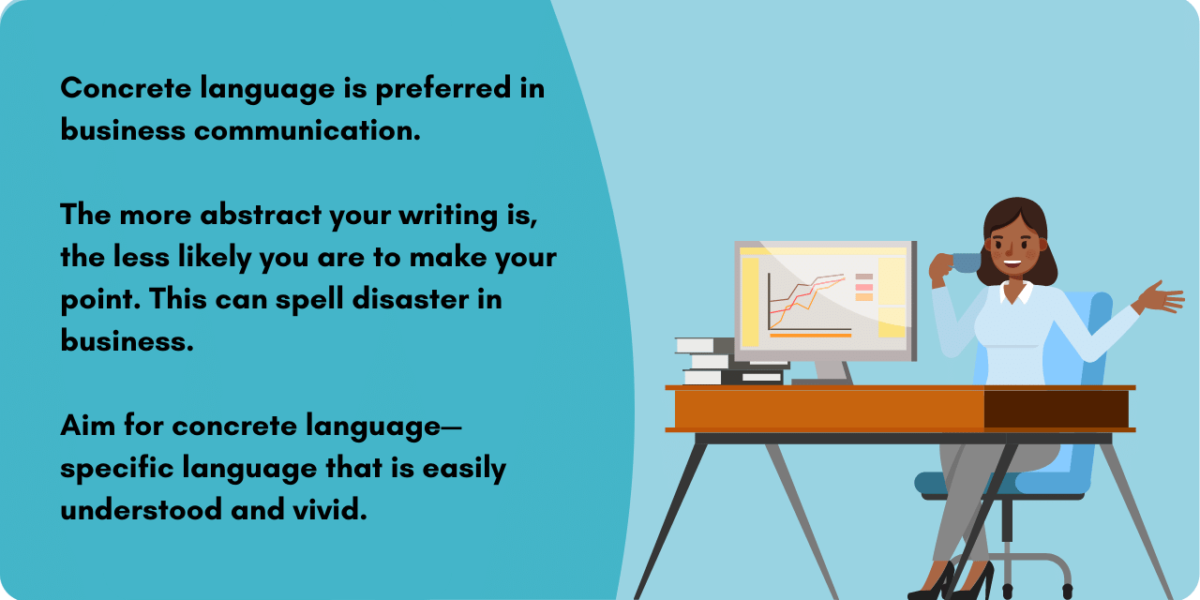
Which is Better? And Why?
Concrete language is preferred in business communication. It gives your readers knowledge about you, your company, and how you differ from your competitors. Also, it can motivate and convince people to buy your product or pay for a service. Concrete wording is powerful.
Check out the following sentences. Which one do you like better? Which one is clear and memorable?
Example 1: Our company can help you meet all your goals.
Example 2: At JLS Marketing, we offer website design, email campaigns, and posting to social media to help you turn leads into customers.
The first sentence is too abstract—it doesn’t provide any value. However, the second sentence defines who you are, what you will do, and how it will help your client. It is attention-grabbing and full of details.
Remember, the more abstract your writing is, the less likely you are to make your point. This can spell disaster in business. So, aim for concrete language—specific language that is easily understood and vivid. And avoid hiding behind broad generalizations.
Classifying Abstract and Concrete Words
Words are like kittens—they don’t stay in one place for long, they jump onto things they shouldn’t, and can be a bit naughty at times. A word may not always fall into the “abstract” or “concrete” category. At times, words can overlap in the level of abstraction and meaning. So, you may need to add context or modifiers to tweak a sentence. Look for ways to provide additional information that will give the reader a better understanding. For example:
Abstract: The supervisor felt it was a complex situation.
Concrete: The HR supervisor recognized the complexity of the employee’s allegations of sexual harassment from a co-worker.
So, to be an effective business writer, you need to understand the differences in abstract vs. concrete language. And using concrete language in business writing is the gold standard in presenting information.
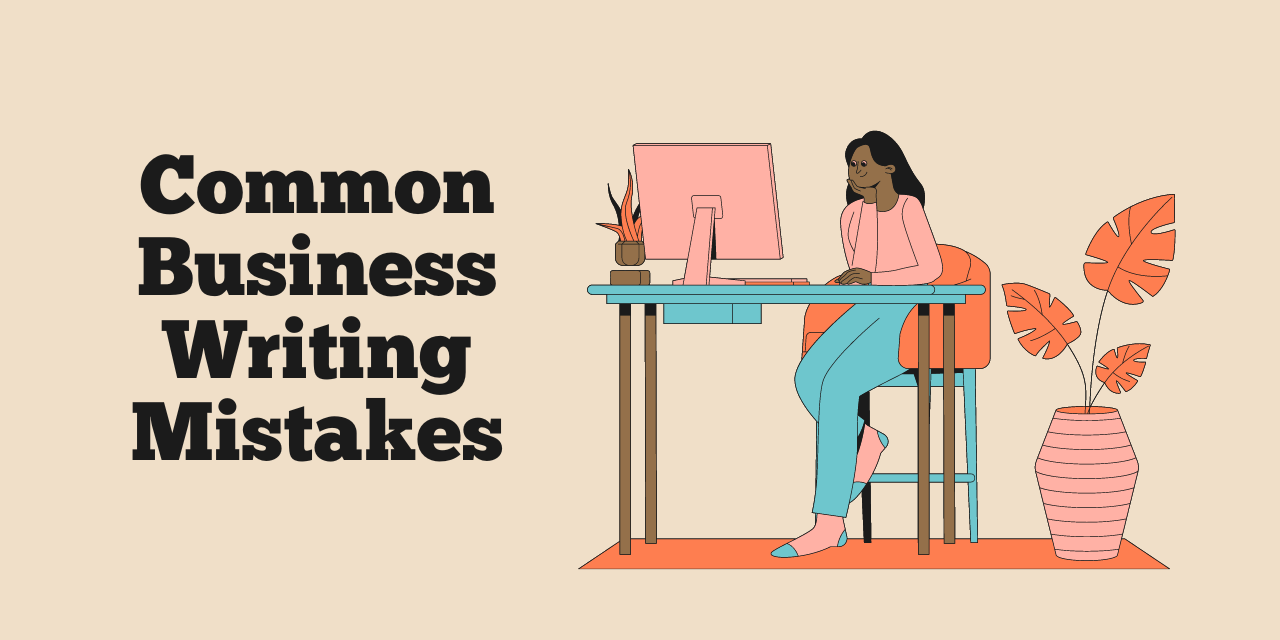
Common Mistakes in Business Writing
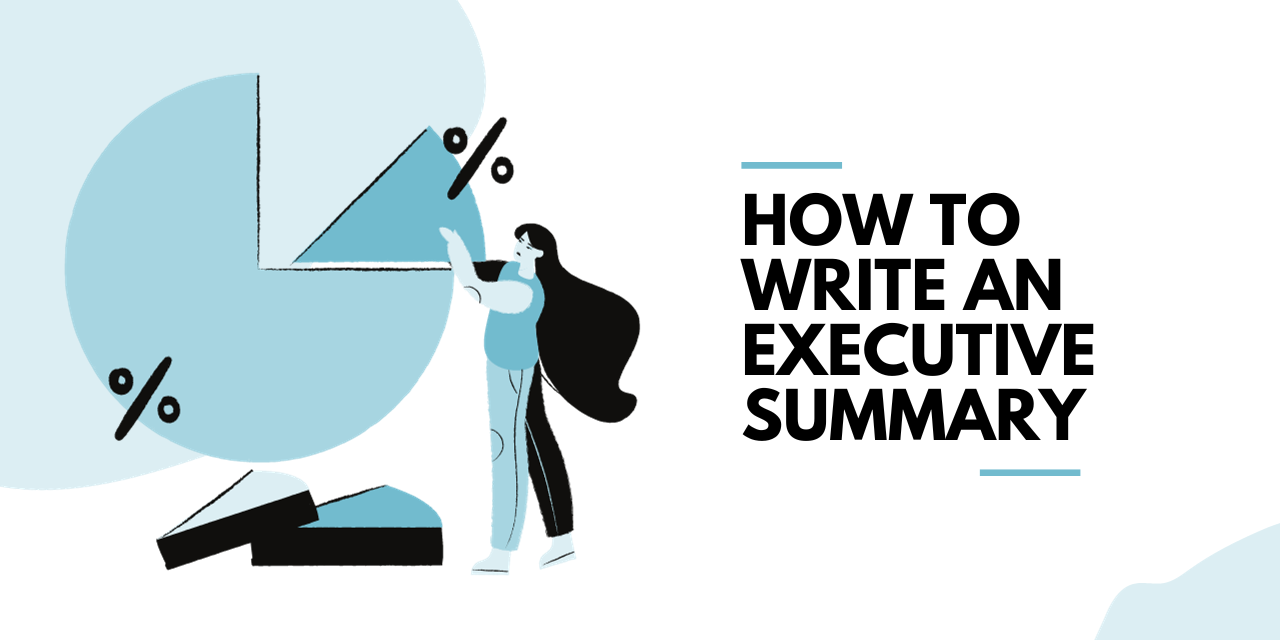
How to Write an Executive Summary
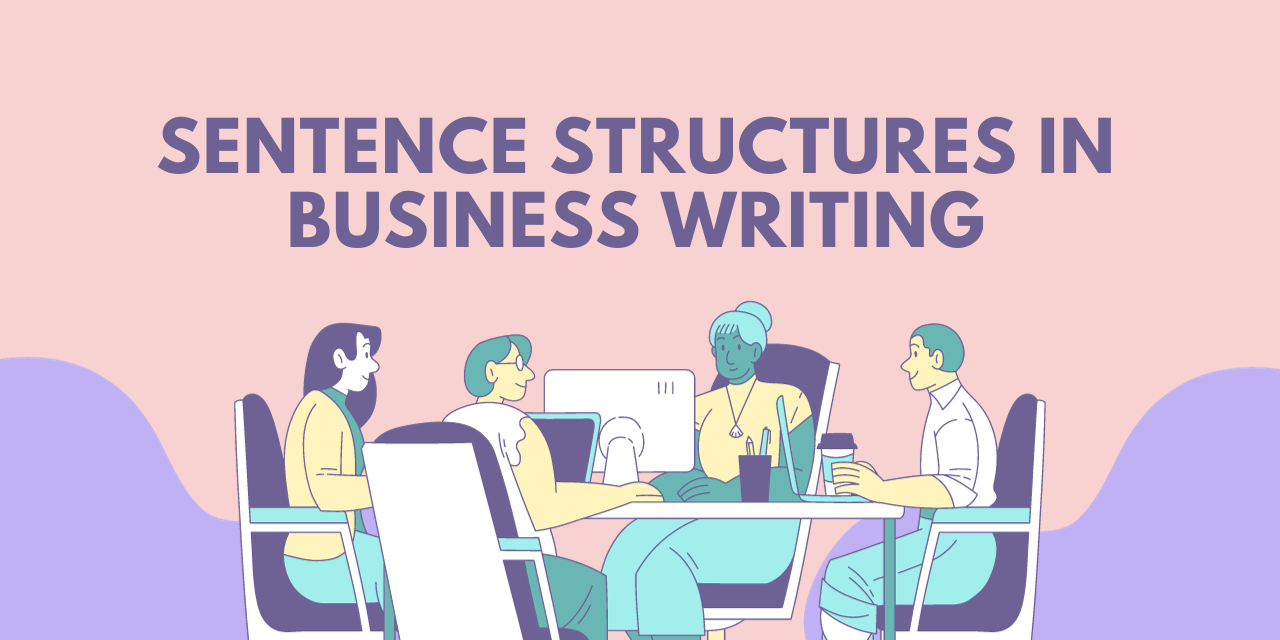
Sentence Structures in Business Writing

Writing Your Year-End Performance Review

Alternatives to “As Per Our Conversation”
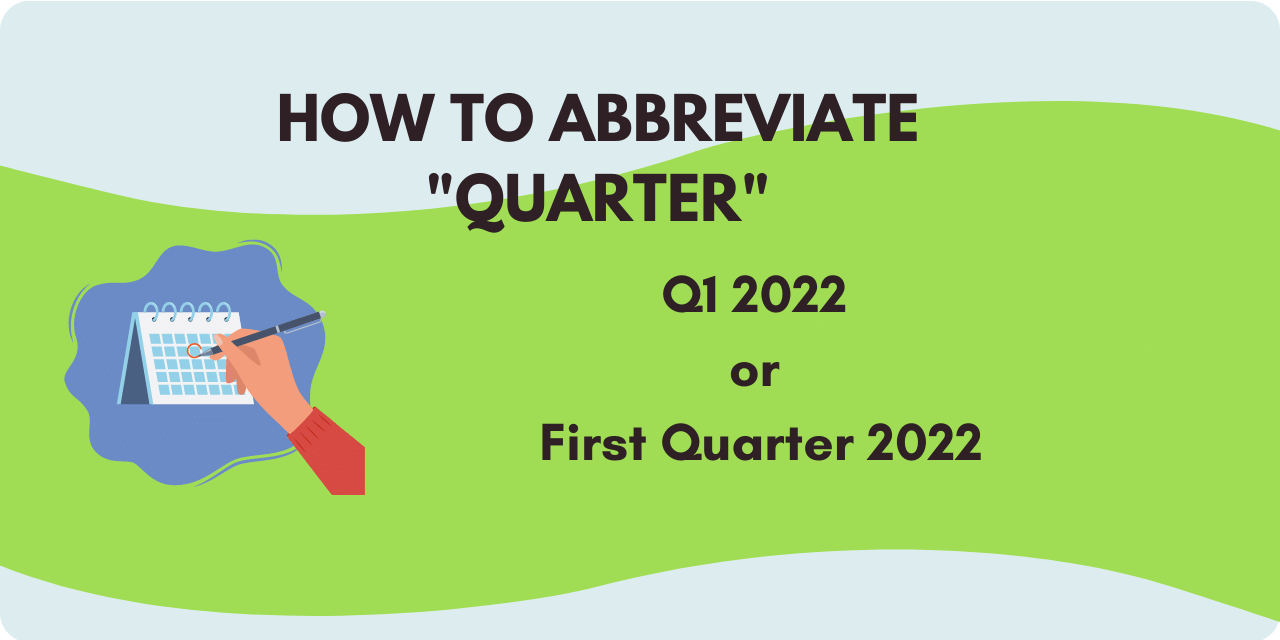
Proper Abbreviation of “Quarter” in Business Communication
Join the thousands who have sharpened their business writing skills with our award winning courses..
Copyright © 2024 Businesswritingblog.com.
- Increase Font Size
Moving from Abstract to Concrete: The Basics of Writing
Most of the writing in college moves from the abstract to the concrete. Abstract ideas are so general that a reader will not have a clear idea of what the writer is talking about. Some words are more abstract than others, but overall, abstract words leave the reader hanging and wondering what specifically the writer means.
Ex. love, happiness, movie, school
In the examples above, notice each one means something different from one person to the next. What makes Sheila happy will be quite different than what makes Damon happy. That is what makes these words abstract.
Concrete ideas are specific, so they create a picture in the reader’s mind of what the writer is talking about. These are words that can be smelled, seen, heard, tasted, touched, and felt.
Ex. Lansing Community College, Lansing, Michigan, Jamal, A Tale of Two Cities
Exercise 1: For each of the abstract words and ideas listed below, write a more specific (concrete) word or example.
Ex. Movie ____Batman____
- Movie _____________________________________
- Singer/musical group __________________________
- Type of music ________________________________
- Type of food _________________________________
- A Selfish action _______________________________
- Candy ______________________________________
- Store _______________________________________
- Act of kindness _______________________________
- Act of hatred _________________________________
- Bad habit ____________________________________
- Good habit ___________________________________
- Historical figure ______________________________
- Political figure ________________________________
- Act of stupidity ________________________________
- Celebrity _____________________________________
Writing for College Introduction to College Writing with Grammar Skills Review by Cheryl McCormick; Sue Hank; and Ninna Roth is licensed under a Creative Commons Attribution 4.0 International License , except where otherwise noted.
Share This Book
- Skip to primary navigation
- Skip to main content
- Skip to footer
Enchanting Marketing
Writing advice for small business
How to Share the ‘Big Picture’ (Without Boring Your Readers to Tears)
by Henneke | 87 enchanting opinions, add yours? :)

I feel bored out of my mind.
How often do you read on auto-pilot without absorbing any knowledge?
How often do you skim texts, looking for interesting tidbits? And how often do you feel disappointed?
I sometimes wonder whether we, as business writers, are doomed to bore each other to tears.
At school, we’ve learned how to write. We learned about grammar and punctuation. But did we learn how to write well? Did we learn how to engage our readers? And how to be persuasive?
If we want our messages to stick, we have to educate and entertain our readers . If we want to share our big ideas without boring our readers to tears, we have to mix abstract advice with concrete imagery .
You haven’t learned that at school, have you? Me neither.
Shall I explain?
The ladder of abstraction
At school, you might have learned that words are either abstract or concrete.
A pear, a grape, a juicy pineapple—these are all concrete words because we can hold a pear in our hand, taste a grape, and smell a ripe pineapple; they’re tangible.
In contrast, success , failure, and a mathematical equation are abstract concepts because we can’t touch failure, we can’t taste an equation, and we can’t smell success. These phrases don’t conjure up concrete images in our mind—unless we get more detailed information like: Henrietta tripped over her shoelaces, lost the contest, and cried like a baby; she felt like a failure.
The distinction between abstract vs concrete may seem clear at first.
Think about fruit. What image pops into your mind?
You might think of the apples, pears and kiwis in your fruit bowl, or you might think of one juicy mango, or you might think of the fruit display at your supermarket or local greengrocer.
When a word conjures up different images—a fruit bowl vs one juicy mango, then a word isn’t terribly concrete.
Even a word like apple is still a tiny bit abstract, as you might conjure up a different image from me. You might think of the bruised apples your mother used for cooking your favorite apple sauce. Or perhaps you think of the zesty Granny Smith you had yesterday afternoon. I’m thinking of the Braeburn apple I had for breakfast with cinnamon, blueberries, almonds, and yogurt.
So, abstract and concrete aren’t discrete categories. They’re a gliding scale.
In his excellent book “ A Writer’s Coach ,” Jack Hart calls this the ladder of abstraction. You can plot our example of fruit on the ladder of abstraction like this:
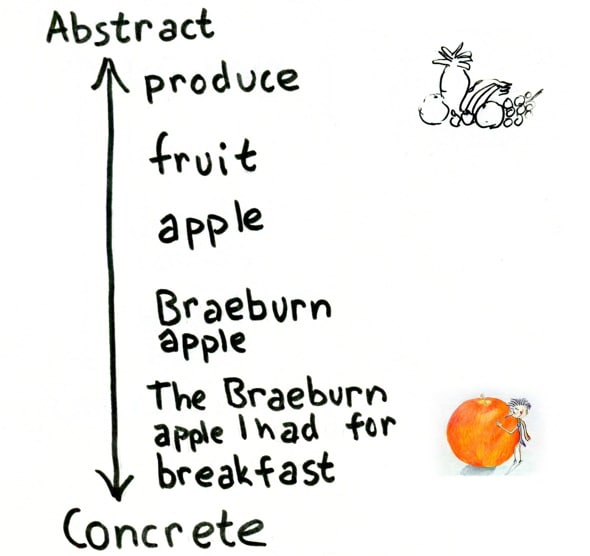
You can create a similar ladder for other topics, for instance:
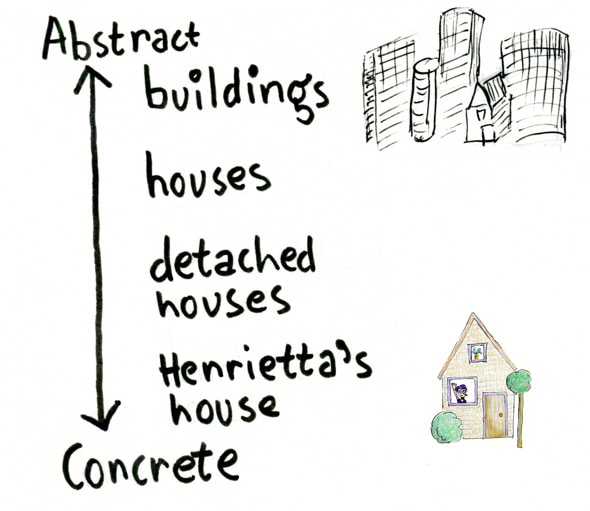
The further you descend down the ladder, the easier it becomes to visualize your words, to imagine a specific scene.
Many writers stay stuck at the top half of the ladder. They mix abstract language with somewhat concrete language, but they don’t become specific enough.
But only when readers can picture a specific scene, your writing becomes engaging and colorful.
Examples: How to mix abstract and concrete language
Good journalists educate readers by mixing specific stories with abstract data and trends.
An article about knife crime by Gary Younge , for instance, starts with a specific story of a specific student:
Quamari Barnes, a 15-year-old student, had been stabbed several times. He fell just yards from the school gate. A woman cradled him in her arms as paramedics rushed to the scene before whisking Quamari away to hospital. By most accounts, Quamari danced to the beat of his own drum. As a precocious child, he held court in conversations with adults from an early age; by his teens, he could cook a full Sunday roast on his own. When he was younger, he had no problem being the only boy in his dance class; as a teenager, while his friends were into grime and rap, he went old-school – Bob Marley, Dennis Brown and Aswad.
Later on, the story gets connected to data and trends:
A Metropolitan police report released last month indicated that between 2014 and 2016 the number of children carrying knives in London schools rose by almost 50%, while the number of knife offences in London schools rose by 26%.
Together, the stories and data engage and educate. The data are cold facts outlining the big picture. The specific stories about specific people add emotion—they provide color to the hard data. They make the facts meaningful.
Good educational content jumps from concrete to abstract and back all the time. Below follows an example of a concrete paragraph from a blog post about the most important question in your life by Mark Manson :
Everybody wants to have an amazing job and financial independence — but not everyone wants to suffer through 60-hour work weeks, long commutes, obnoxious paperwork, to navigate arbitrary corporate hierarchies and the blasé confines of an infinite cubicle hell. People want to be rich without the risk, without the sacrifice, without the delayed gratification necessary to accumulate wealth.
And here’s the abstract lesson—the rule:
[W]hat we get out of life is not determined by the good feelings we desire but by what bad feelings we’re willing and able to sustain to get us to those good feelings.
And he adds a specific story about himself:
For most of my adolescence and young adulthood, I fantasized about being a musician — a rock star, in particular. Any badass guitar song I heard, I would always close my eyes and envision myself up on stage playing it to the screams of the crowd, people absolutely losing their minds to my sweet finger-noodling. This fantasy could keep me occupied for hours on end. (…) Despite fantasizing about this for over half of my life, the reality never came. And it took me a long time and a lot of negative experiences to finally figure out why: I didn’t actually want it. (…) The daily drudgery of practicing, the logistics of finding a group and rehearsing, the pain of finding gigs and actually getting people to show up and give a shit. The broken strings, the blown tube amp, hauling 40 pounds of gear to and from rehearsals with no car. It’s a mountain of a dream and a mile-high climb to the top. And what it took me a long time to discover is that I didn’t like to climb much. I just liked to imagine the top.
And to jump to the last sentence of his post, Manson summarizes his message in abstract language again:
This is the most simple and basic component of life: our struggles determine our successes. So choose your struggles wisely, my friend.
To get readers to listen to our advice, we need to explain the abstract rules, and share concrete stories to add meaning. We sketch the big picture, and use examples to add color.
Good writing dances up and down the ladder of abstraction
A good journalist may narrate the story of one refugee family, before explaining the trends in people’s movements across the earth.
A business coach illustrates online business models with real life stories. An architect shows photos or drawings of buildings to illustrate architectural trends.
Trends, data, rules, models, lessons, and advice are all abstract pieces of information. They tell us the big picture.
But the big picture only comes alive with specific examples and stories.
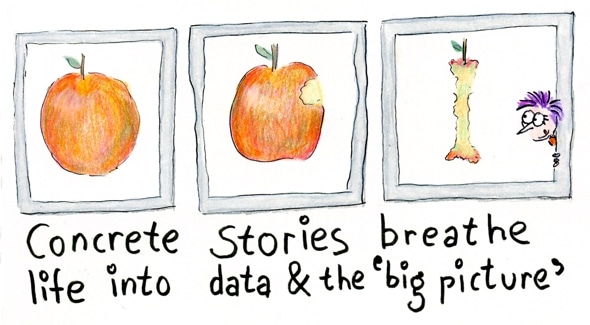
Recommended reading on concrete language:
Enjoyed this get my fortnightly newsletter in your inbox > > >, get my best writing tips in your inbox ....
Success! Now check your email to confirm your subscription.
There was an error submitting your subscription. Please try again.
Reader Interactions
Leave a comment and join the conversation cancel reply.
November 16, 2023 at 5:02 am
This is awesome, especially for a new and upcoming writer. I was engaged and I liked it.
November 16, 2023 at 10:14 am
Thank you, Rupert. Happy writing!
June 30, 2022 at 8:10 pm
You have to want to pay the price for success—that says it all. Can’t begin to tell you how many gems I discovered in this article. Kudos. Thanks a MILLION.
June 30, 2022 at 9:24 pm
I’m glad you found it useful, Donna. Happy writing!
May 19, 2022 at 6:56 pm
You have illustrated this beautiful concept in yet another illustrious article of yours on “Zoom in Zoom out techniques” like no one else. Take a bow Maam. You are my forever writing Hero.
May 21, 2022 at 7:47 pm
Awww. Thank you, Padmaa. I remember feeling really inspired to write this article. It was fun to write!
December 6, 2019 at 2:18 pm
This post definitely sheds some light upon my daily writing.
I’m in charge of social media for a tech-company and more often than not, I try to inject very fancy and complex terms, hoping that it will attract the technical readers. But the more I write, the more I realize that especially on social media when the attention of the audience is extremely short, it’s way better to keep the copy straight forward, short, and provide as much value as possible instead of using bait-click words.
Another thing I learned on the way is that, regardless of your audience, staying authentic and genuine is the key.
December 8, 2019 at 9:51 am
Yes to being authentic and genuine!
Thank you for stopping by, Joy.
December 2, 2019 at 12:44 pm
Writing for Social Media, a writing course I’m currently taking on edX brought me here.
This is absolutely breathtaking.
I subscribed for the “16 concise mails” too?
December 2, 2019 at 6:06 pm
I didn’t even know my website was mentioned in that course. Thank you for letting me know. I hope you’ll enjoy the “snacks!” 🙂
November 25, 2019 at 7:46 pm
Really great article with lots of helpful ideas. I find it hand-wringing-ly frustrating as a business writer when my clients insist that the tone I use is “too conversational” or “too informal”.
Unless you’re the Pope or a president, I find most online and/or marketing writing to be too formal. When people need to pull out a dictionary to get your point, there’s a problem.
Thanks again for the great post. I’m looking forward to checking out more articles here soon.
November 26, 2019 at 12:16 pm
I agree with you—far too much writing is far too formal and it fails to engage. I love your phrase hand-wringing-ly frustrating. It is so true.
November 12, 2019 at 11:23 am
Thanks Henneke for sharing this useful and important rule for writing content that grabs and moves readers to vividly imagine specific scenes supported with context. Being specific and dabbling between concrete and abstract writing is the key to great writing.
November 13, 2019 at 12:07 pm
I’m glad you found it useful, Lucas. Happy writing!
October 13, 2019 at 4:04 pm
Isn’t making paragraphs concrete making them verbose? How do we tackle it?
October 13, 2019 at 4:12 pm
Nope, being verbose means adding needless detail. When you add relevant details, you make your story more vivid. See also here: https://www.enchantingmarketing.com/precise-writing/
August 14, 2019 at 3:22 am
Very helpful examples of the difference between concrete and Abstract thinking. I was born with Autism Spectrum disorder and I have concrete thinking.The world runs one way and that is with abstract words. Your website helped me understand my own thinking.If the teacher starts speaking jargon and uses abstract words I am lost. Thanks for helping me understand why I keep getting confused with what is said not just with teachers but with everyday people. People who know how to speak concrete when I get confused is good.I am not writing a story or anything but trying to understand myself. The visuals with the concrete and abstract words is very helpful.
August 14, 2019 at 10:49 am
I wish the world communicated more in concrete ideas, too, as it’s easier for everyone to understand concrete messages. I’m glad you found the visuals useful. Thank you for your comment, Megan.
October 7, 2022 at 4:00 am
Same issue here. I try to ask people to explain more, and communicate to force them to the concrete way that aligned with my concern thinking style. Unfortunately, it does not work at all. Many times the conversations end via the following sentence: Sorry I could not able to explain it more for you.
October 7, 2022 at 11:09 am
It can sometimes help to ask people for an example. Such as: Can you give an example of how this works?
January 22, 2019 at 9:33 pm
Many thanks for this post! I was so enchanted I just purchased a copy of your “Blog to win business” from Amazon. I’m hoping it will improve my own monthly blog posts. Best regards, Peter
January 22, 2019 at 9:42 pm
Thank you, Peter. I hope you’ll enjoy the book. Let me know?
December 28, 2017 at 11:55 pm
Oh, my goodness, Henneke! Your website is a giant maze of information and I can’t get out, lol. I keep clicking on the next link to see what else is around the corner :). But I am so glad I got stuck here :D. Thank you for sharing!
December 29, 2017 at 7:47 pm
Yes, it’s a maze, isn’t it? Before you know you can spend hours reading here …
Thank you so much for your lovely comment, Lena. Happy writing!
June 4, 2017 at 2:48 pm
I think last two lines is the summary of the post, love the style.
last year i have taken a course from Coursera and learned the strategies of writing an introduction paragraph and I loved those strategies. Among those strategies, two were writing through storytelling and writing with interesting statistics. I think your post will help me to combine those and to write an engaging introduction for my reader.
June 6, 2017 at 11:40 am
Yes, using stats and storytelling are both powerful strategies; and the real magic happens when you combine the two.
Thank you for stopping by to comment, Hasan. I appreciate it.
May 17, 2017 at 7:55 am
Loved this post! The abstract ladder really got me thinking and when I saw the mix of concrete and abstract to deliver interesting content, it was another light bulb moment.
Thanks for the consistently inspiring and enriching posts, Henneke.
May 12, 2017 at 8:38 am
Hey Henneke,
This article resonated deeply with me, especially:
> And what it took me a long time to discover is that I didn’t like to climb much. I just liked to imagine the top.
That’s something I’ve come to realise lately, the difference between thinking that you want something, and actually wanting it so much so that you’ll put in the hard work to go and achieve it.
May 12, 2017 at 6:46 pm
Did you click through to read Mark Manson’s article? I really his perspective on this, too.
Thank you for stopping by, Matthew.
May 10, 2017 at 7:11 am
Hi Henneke,
Excellent post as usual.
It means while descending by the ladder of abstraction we’ve to cut FAT(gobbledygook) from our content to make it concrete. Examples, story & few sensory words help to explain the abstract rule & create a Big picture. Ultimately it becomes digestible for readers to gobble up. 🙂 I understood this much from post. 😉
Thank you so much.
May 10, 2017 at 1:27 pm
That’s a good point about gobbledygook because gobbledygook is usually somewhere in the middle of the ladder. It’s not super abstract and it’s not really specific. Usually content gets better if we replace gobbledygook by super-concrete details.
Thank you for stopping by again, Mehera. I appreciate it 🙂
May 10, 2017 at 2:44 am
As usual, you don’t disappoint! Your idea on abstract vs concrete is interesting, I’ve actually never thought about the distinction between the two but now that I think about it, I can wholeheartedly agree with you — they are indeed very distinct from one another.
I tend to be stuck in the top half of the ladder for most of my writing but hopefully now that i’ve learnt a bit more about abstract and concrete, I can maybe switch between the top half and bottom half of the ladder more often!
Anyways before I end up writing an entire essay, lemme just end it there! Thank you so much for sharing this with all of us Henneke, i’m super duper excited for more content from you!
May 10, 2017 at 1:26 pm
Most people remain stuck at the top half of the ladder, but the most interesting content combines the very top with the very bottom of the ladder; it mixes the super-concrete with the really abstract.
Happy writing, George! And thank you for your lovely comment. 🙂
May 9, 2017 at 9:52 pm
My posts always do better if I begin with a juicy story. You are so right! Why can’t I remember that when I’m writing!?
May 9, 2017 at 10:02 pm
I bet you have more than enough juicy stories to tell!
May 9, 2017 at 9:37 pm
I absolutely love all your articles, they’re all so fun to read yet so informative at the same time, you’re definitely the type of writer I aspire to be (your graphs aren’t half bad either :P)
Along with the concepts you explained, the article that Gary wrote was also pretty nice. From the way you explained it, I can definitely understand why it was so effective — something that might have taken me a bit longer to realise if it weren’t for you!
May 9, 2017 at 10:00 pm
I agree with you – that article by Gary Younge is well written, and it’s interesting to see how he keeps jumping up and down the Ladder of Abstraction to mix concrete stories with the data and the trends.
Thank you for stopping by.
May 9, 2017 at 8:57 pm
Fascinating! I certainly didn’t learn how to write well at school and had never heard of abstract and concrete words until now. So thank you, Henneke for another great post 🙂 and thank you for the recommendation, will check it out.
May 9, 2017 at 9:59 pm
I’m glad you enjoyed it, Yolanda. Maybe I should be more grateful for bad teachers, so there’s still enough interest in reading my blog posts 😉
I hope you’ll enjoy Jack Hart’s “The Writing Coach”
May 9, 2017 at 8:04 pm
You’re right, I’m sure the teachers didn’t mention that we have to mix abstract advice with concrete imagery. Unless I was asleep…
But getting that mix of facts intertwined with stories is a great way to keep readers engaged with our posts.
I loved your examples and illustrations in this post, just been saving them to Pinterest. – David
PS – will check out the recommended book, A Writer’s Coach
May 9, 2017 at 9:57 pm
I’m pretty sure you’ll enjoy that book, David!
And it’s good to know I wasn’t the only one with bad teachers 😉
Thank you for stopping by and for spreading the word.
May 9, 2017 at 7:43 pm
Hi Henneke, Love your drawings. The last one made me smile with delight. ? I still remember how you taught me during the course, to use examples and metaphors. You wouldn’t let me off the hook before the scene became vivid with details. That was a great lesson. And your article reminded me of it. But not only. Thank you for bringing the subject of the abstract and concrete writing to us so clearly and artistically.
May 9, 2017 at 9:54 pm
When my drawings make someone smile, I’m happy 🙂
Thank you for your lovely comment, Irina. Happy writing!
May 9, 2017 at 7:29 pm
Henneke, I love this from your email intro. “To be honest, I’m not sure how many writing teachers really understand it. (Abstract/Concrete continuum) I definitely never learned about it at school. And that irks me.”
🙂 Tis an irritation isn’t it? I got past it, more or less, when I decided the “master” teacher’s limitations left that much more for me to discover on my own. Kinda turned it into a treasure hunt for me.
May 9, 2017 at 9:45 pm
Curtis, that’s so true. The treasure hunt is perhaps more satisfying than being told how to write. Organizing our own treasure hunt and discovering the treasures is fun, right? Perhaps I should be more grateful to my teachers who left me so much to discover 🙂
May 10, 2017 at 4:56 am
With your student’s quest, since of curiosity and imagination you have already done a wonderful job of organizing your treasure hunt and sharing it with the rest of us. I would submit this most recent post as exhibit “A”. The email page you sent was killer. It was impossible for me not to click through to the post. Impossible On with the treasure hunt. The best has yet to be found.
May 10, 2017 at 1:24 pm
The click rate on this email was pretty high, so many people have found it quite impossible to resist clicking. It’s been on my list a while to write a blog post about emails that entice readers to click. You reminded me of this, so thank you for the nudge 🙂
Sometimes it’s hard to keep the faith, but I think you’re right that the most sparkling and most surprising treasures are still to be found 🙂
Thank you, Curtis, I appreciate your encouragement!
May 9, 2017 at 5:49 pm
this is one reason I always look forward to receiving that email from you weekly, it’s always worth the wait. satisfying and sticking. this is yet another undeniably enchanting one. thanks for this one again.
May 9, 2017 at 9:42 pm
Thank you so much for your lovely comment, Cynthia. I’m glad you’re finding my content worth the wait 🙂
May 9, 2017 at 5:47 pm
What a wonderful contemporary illustration of the use of Ladder of Abstraction! I originally discovered it in S.I. Hayakawa’s “Language In Thought And Action” (5th ed. 1990) and use it often in my daily life in general.
Interestingly, Jack Hart also refers to that book – that’s where he first came across the Ladder of Abstraction. I’ve put it on my reading list. I’m looking forward to reading it!
May 9, 2017 at 5:14 pm
Like Ini I too would like to learn more of this concept. I’m not a writer just a budding entrepreneur who savours the art of good writing practise and who strives to do better at such. Your advice is always a worthwhile read Henneke and while ‘yes’ I’m guilty of skimming for tidbits I look forward to your posts my dear. Cheers sweetie….
May 9, 2017 at 7:42 pm
I’d recommend Jack Hart’s book (A Writer’s Coach) – he discusses the ladder of abstraction in chapter 9. You may also find it useful to analyze how other writers use abstract vs concrete language – that’s what I do to keep improving my own writing.
I’m glad you enjoyed this one, Debbie. Thank you for stopping by 🙂
May 9, 2017 at 4:43 pm
Excellent post! When I read your posts I feel like we are sitting together over coffee or tea. Thoroughly enchanting! Thanks!
May 9, 2017 at 7:38 pm
I enjoyed our cuppa together, Lane. 🙂
May 9, 2017 at 4:35 pm
Fantastic post. This reminds me of my great high school English teacher. He would have us write a short essay almost everyday. His prompts would have us identify our topic to write about and then include “textual evidence” to back up our claims. This article reminded me of that.
May 9, 2017 at 7:37 pm
It sounds like you had a much better English teacher than I’ve had!
Thank you for stopping by, Bobby.
May 9, 2017 at 4:08 pm
You’ve been reading Jack Hart! Yay 🙂 Isn’t ‘A Writer’s Coach’ terrific?
I love the way with this ladder of abstraction concept he values both the abstract and the earthy. He wants writers to connect these poles together, to get them working with each other – rather than staying stuck in the boring middle.
I found his book a fab reinforcement to what you teach on your courses. Highly recommended. Both your courses and his book 😉
May 9, 2017 at 7:36 pm
Yes, it’s a terrific book, and I so appreciate your recommendation! It’s probably one of the best (perhaps THE best) all round writing guide I’ve read.
I haven’t read the whole book yet. I like dipping into it and read a chapter here or there. I actually read the chapter about the ladder of abstraction a couple of months ago, but didn’t quite know how I wanted to write it about until we were doing metaphors in the course last week 🙂
I appreciate your recommendation on my courses, too 🙂
May 9, 2017 at 3:57 pm
Hi Henneke, I not only enjoyed your article but didn’t skim read at any point; so I guess you walked the talk. I’d like to ask the purpose of the square parentheses in the Mark Manson content…[W]hat we get out of life… Thanks
May 9, 2017 at 7:33 pm
That’s because in the original text it wasn’t a capital because it wasn’t the start of the sentence. The full sentence was: “Therefore, what we get out of life is not determined by the good feelings we desire but by what bad feelings we’re willing and able to sustain to get us to those good feelings.” But the “Therefore” was confusing as a stand-alone sentence, so I eliminated it.
Another way to quote would be: “(…) what we get out of life is not determined by the good feelings we desire but by what bad feelings we’re willing and able to sustain to get us to those good feelings.”
I’m not sure whether different style guides have different preferences. I’ve seen both used.
May 9, 2017 at 3:05 pm
There’s a new concept. Abstraction on a scale. Huh. Interesting!
Yes, surprisingly simple, yet quite impactful 🙂
May 10, 2017 at 4:47 pm
Does the author draw up complicated schemes of wheter you should match a 1/3 concrete with a 2/3 abstract word, for instance? What is exactly his point about subdividing abstract and concrete?
May 10, 2017 at 7:35 pm
Jack Hart doesn’t suggest a specific scheme or formula. I don’t think that exists.
The point of the continuum of abstraction is to help people understand what it really means to use concrete language. Many writers think their writing is concrete, but their writing is only half-way the continuum. If they’re able to make their writing more concrete (or more specific), then their content becomes more engaging as readers can visualize their words.
A second advantage is helping writers understand that abstract sentences aren’t wrong—as long as you mix the abstract statements with concrete examples so the writing feels alive rather than being just dry facts.
May 10, 2017 at 7:56 pm
Ah, OK, gotcha!
May 9, 2017 at 2:39 pm
Excellent Henneke, When I first stepped into the blogosphere, the fact that was bewildering was the number of authors devoted on making you a better blogger. From tech lessons to how-to’s, there seemed to be few blogs with anything I wanted to read. Then I came cross Harleena Singh and Aha.now.com., The Wondereof tech.com and your highly educating and super reading site Your clear thinking and analytical writing could be a master class in any University – this is not flattery. I am a retired professor myself. At the same time there is so much of you in every post that I can almost see you, your bycle and sketching pens,each time I start to read your writing. Abstract my mind picture maybe,but you have laid down more concrete facts than anyone I have read. It’s like hearing facts from a trusted friend whose way with words is magical. Combine that with your cartoons you are someone I know+ in my mind.
I wish my days of teaching were still going. All my students would be using your posts as course material. Thank you again. Nicolas.
May 9, 2017 at 7:28 pm
Yes, I know what you’re saying about the bewildering blogosphere. I’ve felt the same, and still feel like that to some extent. I survive by focusing on getting the essentials right.
Thank you for you lovely compliment on my writing. I love writing and sharing what I learn!
I appreciate your stopping by, Nicolas. Thank you.
My pleasure entirely.
May 9, 2017 at 2:32 pm
As usual, another thoughtful insight this will remain etched in my brain for a long time – probably forever.
May 9, 2017 at 6:58 pm
Thank you for your lovely comment, Bernice. Happy writing!
May 9, 2017 at 12:52 pm
This is an interesting concept, Henneke and I would like to study it better.
Thank you for sharing.
If you want to know more, I recommend Jack Hart’s book “A Writer’s Coach” – chapter 9.
Also, see how other writers you admire implement this idea; that’s one of the best ways to learn more and improve your writing (it’s what I continue to do to improve my writing).
May 9, 2017 at 12:41 pm
A luminary once explained that, as we grow, we move from a state of unaware ignorance (we dont know that we dont know) through to a state of aware knowing.
Henneke, you’ve just helped us writers to be aware of the abstraction ladder AND to know how to use it. Thank you indeed.
May 9, 2017 at 6:56 pm
Yes, that’s so true… moving from a state of unaware ignorance to a state of aware ignorance can be quite scary so I wanted to make sure this post moved you all the way to a state of aware knowing. That’s how I like to write my blog posts 🙂
Thank you for your lovely comment, Gary.
May 9, 2017 at 12:29 pm
Great post. Loved the stories and the examples. When you use examples like that, abstract vs concrete language does seem clearer. I didn’t fully understand it before but your examples helped me see the big picture of how each type of language works.
And can be effective.
Great job as usual.
– Andrew
May 9, 2017 at 6:54 pm
I also loved how Jack Hart explained this in his book The Writer’s Coach. I knew about the importance of specificity and have written about it before. But this was the first time, I heard about the ladder of abstraction – I love it!
May 9, 2017 at 12:27 pm
This was a fascinating article. What a great explanation of how abstract and concrete work together to paint a vivid picture and convey a message. And boy, could I relate to my eyes glazing over looking for a tidbit…
A Writer’s Coach sounds like a great read. And your drawings are fabulous!
Yes, the Writer’s Coach is an excellent read. It’s a great book for grazing (like reading a chapter here or there when you feel like it). I don’t think it’s a book to read from cover to cover in one session of binge reading.
Thank you for your compliment on my drawings. It was fun to draw a little more for this post 🙂
May 9, 2017 at 12:26 pm
This is an excellent post. It’s a step closer to understanding something I’ve been struggling to understand, this whole abstract VS concrete thing.
To be honest, I didn’t know this is one of the issues I struggled with. I mean, I wouldn’t have been able to put it into words. That’s what makes this post good.
May 9, 2017 at 5:46 pm
You’re not the only one. This is where I see most writers go wrong, and they don’t realize exactly why their writing feels bland.
Once you understand this dance between abstract and concrete ideas, you start seeing it in all good writing.
May 9, 2017 at 6:01 pm
I shall keep an eye open for the dance.
A question to a fellow litty: what do you think of Ursula K. Le Guin’s The Lathe of Heaven?
I recently read it. Lovely story, but her use of language is appalling.
Am I the only one who thinks so? I can’t seem to find straight crit on her work. It’s disturbing.
May 9, 2017 at 6:52 pm
I’ve not read any of her work (I’m not really into SF). I purchased her book “Steering the Craft,” but haven’t read it yet. So, I can’t really comment.
I’d say, trust your own judgment. A lot of writing is surprisingly poor.
May 9, 2017 at 12:23 pm
Great story again Henneke! Thanks for sharing your knowledge with us time and again.
May 9, 2017 at 5:44 pm
It’s a pleasure to write for lovely readers like you, Olga! Seriously. I mean that 🙂
May 9, 2017 at 12:02 pm
Very interesting. I never considered writing or stories to sit on a scale of abstract to concrete. Or perhaps I just never considered it this way.
I know I finally broke my silence with your last post (or the one before?) and complimented you on how amazing of a writer I think you are, so my next sentence is probably going to make me sound like either a nut bag or a creepy fan, but I think your writing is art. This is the thought that popped into my mind after I navigated your once again magical story.
But then I pondered this a few more seconds and I thought, but no you’re also very clear in delivering and achieving what you set out to explain, so more mathematical. And then I decided that your writing is as beautiful as a simple, yet elegant math question and as adventurous and insightful as a beautiful piece of art.
To me being both math and art is golden.
What can I reply to such a lovely comment?
Thank you for your huge compliment, Charlie. You put a smile on my face 🙂

Books and courses
Follow proven templates for specific writing tasks, practice your skills, and get professional feedback so you become a confident business writer. Take on any writing project with gusto. Learn more about books and courses

About Henneke
I never saw myself as a writer, but in my early forties, I learned how to write and discovered the joy of writing. Now, I’d like to empower you to find your voice, share your ideas and inspire your audience. Learn how I can help you
Popular topics
Sales copywriting
Blog writing for business
Your writing voice
Tips for beginning writers
The writing process
Improve your writing skills
Writing examples
Popular blog posts
Recent blog posts
Free Snackable Writing Course
Get 16 concise emails and learn how to write more persuasive content.

- school Campus Bookshelves
- menu_book Bookshelves
- perm_media Learning Objects
- login Login
- how_to_reg Request Instructor Account
- hub Instructor Commons
Margin Size
- Download Page (PDF)
- Download Full Book (PDF)
- Periodic Table
- Physics Constants
- Scientific Calculator
- Reference & Cite
- Tools expand_more
- Readability
selected template will load here
This action is not available.

4.2: Abstract and Concrete Diction
- Last updated
- Save as PDF
- Page ID 170511
\( \newcommand{\vecs}[1]{\overset { \scriptstyle \rightharpoonup} {\mathbf{#1}} } \)
\( \newcommand{\vecd}[1]{\overset{-\!-\!\rightharpoonup}{\vphantom{a}\smash {#1}}} \)
\( \newcommand{\id}{\mathrm{id}}\) \( \newcommand{\Span}{\mathrm{span}}\)
( \newcommand{\kernel}{\mathrm{null}\,}\) \( \newcommand{\range}{\mathrm{range}\,}\)
\( \newcommand{\RealPart}{\mathrm{Re}}\) \( \newcommand{\ImaginaryPart}{\mathrm{Im}}\)
\( \newcommand{\Argument}{\mathrm{Arg}}\) \( \newcommand{\norm}[1]{\| #1 \|}\)
\( \newcommand{\inner}[2]{\langle #1, #2 \rangle}\)
\( \newcommand{\Span}{\mathrm{span}}\)
\( \newcommand{\id}{\mathrm{id}}\)
\( \newcommand{\kernel}{\mathrm{null}\,}\)
\( \newcommand{\range}{\mathrm{range}\,}\)
\( \newcommand{\RealPart}{\mathrm{Re}}\)
\( \newcommand{\ImaginaryPart}{\mathrm{Im}}\)
\( \newcommand{\Argument}{\mathrm{Arg}}\)
\( \newcommand{\norm}[1]{\| #1 \|}\)
\( \newcommand{\Span}{\mathrm{span}}\) \( \newcommand{\AA}{\unicode[.8,0]{x212B}}\)
\( \newcommand{\vectorA}[1]{\vec{#1}} % arrow\)
\( \newcommand{\vectorAt}[1]{\vec{\text{#1}}} % arrow\)
\( \newcommand{\vectorB}[1]{\overset { \scriptstyle \rightharpoonup} {\mathbf{#1}} } \)
\( \newcommand{\vectorC}[1]{\textbf{#1}} \)
\( \newcommand{\vectorD}[1]{\overrightarrow{#1}} \)
\( \newcommand{\vectorDt}[1]{\overrightarrow{\text{#1}}} \)
\( \newcommand{\vectE}[1]{\overset{-\!-\!\rightharpoonup}{\vphantom{a}\smash{\mathbf {#1}}}} \)
What is the difference?
Another way of looking at diction, or a creator's word choices, and one of the most valuable pieces of advice to give you as a developing writer, involves considering the difference between concrete and abstract diction . In order to do this properly, see the following definitions.
Definition: Concrete Diction
Words that are tangible or describe physicality. You can physically interact with what concrete words describe. Think of words like parrot, harpoon, or aiglet. These words are used for specific objects that could exist in real or imagined versions of meatspace.
Definition: Abstract Diction
Words that are intangible. You can't physically touch the things these words describe. Abstract diction means words that involve nonphysical objects. Think of words like luxury, realness, or attitude.
Brainstorm Abstract Terms \(\PageIndex{1}\)
Now that you have a concept of what abstract terms are, think of ten. If you notice that most of them have more than one syllable, you might be on to something!
Some examples of abstract terms are felicity, observation, love, character, fortitude, audacity, concordance, loyalty, bravery, integrity.
On Concrete and Specific Language
In college writing, we want to focus on bringing our ideas as clearly and meaningfully across as we can, and our audiences appreciate relevant and illustrative examples. When you describe a setting, you can say the forest has trees, or you can mention the atmosphere using a modifier for forest and create a more specific image of this forest for your reader to inhabit as you take them there in your writing: the labyrinthine forest of elder trees. When we wish to create examples in our writing, one excellent activity to practice is naming the concrete within the abstract: start with an abstract or general word and find examples that describe or illustrate that word.
Activity: Concrete Abstractions \(\PageIndex{1}\)
With a partner or group, discuss each of the following examples of abstract diction. Then, provide three examples of concrete diction (a word or a phrase) that shows what the abstract words describe. See the example below.
For example, love.
Three concrete words or ideas that show love are love notes, flower bouquets, and lip smooches.
Your answers should vary greatly, but here are a few examples from past students in courses at Evergreen Valley College

Abstract vs. Concrete Writing in Marketing
- Content Marketing

According to the above screenshot from Hemingway App , it reads at a 4th grade level, so we’re good!
Another thing you may notice, I eliminated the word “solutions.” Solutions is a popular word in B2B writing but it’s very abstract. Besides, in this example it is the software that solves the problem, not the abstract-sounding solution . We should say it that way.
One final thing I want to touch on. This sentence is also a good example of showing rather than telling with your writing. You don’t have to say something like “streamline operations” if you can show what streamlining operations actually means. Like by saying: work faster by automating the tasks you don’t have time for.
Conclusion: Be Concrete.
If you use abstract words, it seems like you’re trying to hide behind them. This makes you look unsure and readers will pick up on your uncertainty. Would you buy from someone that came across as unsure about their product? Would you give your email to someone like that? Would you give your email to a website like that?
One way to force yourself to be concrete is to write shorter sentences. Think of facts. Facts don’t need flowery language or embellishment. They stand on their own. If you want to be convincing, write like you’re stating a fact. Again, Hemingway App is great for this. Which reminds me, how easy was this blog to read?

Nice, thank god.
You now have a better idea how to spot abstract content and turn it into concrete terms. Now, get out there and start making sense. Good luck!

Gab, content marketing coordinator, is a creative writer with over ten years of copywriting experience. In her role, she creates compelling content for Altitude and our global roster of clients. Always writing with the client in mind, she crafts content that increases brand awareness, boosts website traffic, drives leads and engages a client’s ideal audience.
Suggested Articles

How Marketing Data Drives Sales Performance and Revenue Growth
B2B Email Marketing: How to Write the Perfect Subject Line (With Our Data)
Marketing Automation in B2B: A Comprehensive Guide
Watch Now: How to Write the Perfect RFP
Why Influencer Marketing Should Be Part of Your B2B Strategy
Table of Contents
Ai, ethics & human agency, collaboration, information literacy, writing process, concrete language, sensory language.
- © 2023 by Joseph M. Moxley - University of South Florida
Concrete, Sensory Language references specific places, events, people, and tangible topics and invokes the readers' senses (taste, smell, touch, sight, and sound). Learn when and how to employ concrete, sensory language as opposed to abstract language , figurative language, vague language , overgeneralized language.

What is Concrete Language, Sensory Language?
Concrete, Sensory Language
- references specific places, events, people, and tangible topics
- invokes the readers’ senses (taste, smell, touch, sight, and sound)
- an attribute of prose associated with clarity and simplicity .
C oncrete, sensory language is the antithesis of abstract language , which tends to be intangible and metaphysical.
Related Concepts: Description ; Diction ; Figurative Language ; Vague Language ; Writer-Based Prose Style
Why Does Concrete, Sensory Language Matter?
Concrete , sensory language provides the level of detail, the level of specificity, that readers, listeners,and users need to understand and properly imagine and interpret a text .
Strategic use of concrete, sensory language is a defining characteristic of reader-based prose. Inexperienced writers often struggle to imagine the descriptive details readers need to follow along
develop the register , the rhetorical stance , needed to communicate in home, school, and workplace discourse.
Concrete language doesn’t require as much mental processing on the part of the reader, listener, or user as abstract language . For instance, if you use the word chair in a text, you know your readers will have a pretty clear idea in their mind about what a chair is.
In general, texts that employ concrete, sensory language are more readable than texts that rely primarily on abstract language , vague, overgeneralized language .
The great enemy of clear language is insincerity. When there is a gap between one’s real and one’s declared aims, one turns as it were instinctively to long words and exhausted idioms, like a cuttlefish spurting out ink. Probably it is better to put off using words as long as possible and get one’s meaning as clear as one can through pictures and sensations. Afterward one can choose—not simply accept —the phrases that will best cover the meaning George Orwell, Politics and the English Language (2013)
How Can I Revise My Language to be More Concrete, More Sensory?
Replace abstract language with words that have clear, direct, and precise meaning..
Abstract Language Example: The case sought to establish equality for people of all sexual orientations.
Critique : Here, equity is an abstraction . After all, equality can mean a variety of things to different people: What does equality mean in this instance?
Revision: The case sought to legalize gay marriage.
Use language that appeals to the senses.
Abstract Language Example : The waiting room was unpleasant .
Critique : What makes this setting unpleasant ? Replace this term with specific descriptive language.
Concrete: The waiting room was cold, antiseptic-smelling, and crowded with sick people who were coughing, groaning, or crying.
Recommended Resources
Hayakawa, S. I. (1964). Language in Thought and Action . Harcourt, brace & world.
Ohmann, R. (1979). Use definite, specific, concrete language. College English, 41 (4), 390-397.
Orwell, G. (2013). Politics and the English language . Penguin Classics.
Balmford, C. (n.d.). Plain language: Beyond a movement . PlainLanguage.gov. https://www.plainlanguage.gov/resources/articles/beyond-a-movement/

Brevity - Say More with Less

Clarity (in Speech and Writing)

Coherence - How to Achieve Coherence in Writing

Flow - How to Create Flow in Writing

Inclusivity - Inclusive Language

The Elements of Style - The DNA of Powerful Writing

Suggested Edits
- Please select the purpose of your message. * - Corrections, Typos, or Edits Technical Support/Problems using the site Advertising with Writing Commons Copyright Issues I am contacting you about something else
- Your full name
- Your email address *
- Page URL needing edits *
- Phone This field is for validation purposes and should be left unchanged.
Other Topics:

Citation - Definition - Introduction to Citation in Academic & Professional Writing
- Joseph M. Moxley
Explore the different ways to cite sources in academic and professional writing, including in-text (Parenthetical), numerical, and note citations.

Collaboration - What is the Role of Collaboration in Academic & Professional Writing?
Collaboration refers to the act of working with others or AI to solve problems, coauthor texts, and develop products and services. Collaboration is a highly prized workplace competency in academic...

Genre may reference a type of writing, art, or musical composition; socially-agreed upon expectations about how writers and speakers should respond to particular rhetorical situations; the cultural values; the epistemological assumptions...

Grammar refers to the rules that inform how people and discourse communities use language (e.g., written or spoken English, body language, or visual language) to communicate. Learn about the rhetorical...

Information Literacy - Discerning Quality Information from Noise
Information Literacy refers to the competencies associated with locating, evaluating, using, and archiving information. In order to thrive, much less survive in a global information economy — an economy where information functions as a...

Mindset refers to a person or community’s way of feeling, thinking, and acting about a topic. The mindsets you hold, consciously or subconsciously, shape how you feel, think, and act–and...

Rhetoric: Exploring Its Definition and Impact on Modern Communication
Learn about rhetoric and rhetorical practices (e.g., rhetorical analysis, rhetorical reasoning, rhetorical situation, and rhetorical stance) so that you can strategically manage how you compose and subsequently produce a text...

Style, most simply, refers to how you say something as opposed to what you say. The style of your writing matters because audiences are unlikely to read your work or...

The Writing Process - Research on Composing
The writing process refers to everything you do in order to complete a writing project. Over the last six decades, researchers have studied and theorized about how writers go about...

Writing Studies
Writing studies refers to an interdisciplinary community of scholars and researchers who study writing. Writing studies also refers to an academic, interdisciplinary discipline – a subject of study. Students in...
Featured Articles

Academic Writing – How to Write for the Academic Community

Professional Writing – How to Write for the Professional World

Credibility & Authority – How to Be Credible & Authoritative in Speech & Writing
- Link to facebook
- Link to linkedin
- Link to twitter
- Link to youtube
- Writing Tips
Concrete vs. Abstract Nouns – What’s the Difference?

3-minute read
- 21st April 2023
As the old rule goes, a noun is “a person, place, or thing.” But did you know that nouns can be divided into two distinct categories? Those types are concrete nouns and abstract nouns .
What’s the difference, and are there any rules on how to use them? Read on to find out.
Concrete Nouns
Concrete nouns are what you probably think of first when you think of nouns. They are tangible objects, places, and things that you can experience with at least one of your five senses – that is, you can see them, touch them, smell them, taste them, or hear them.
Examples of Concrete Nouns
To give you a better sense of what concrete nouns are, here are some examples:
Concrete nouns also include some proper nouns , such as names of people, places, and brands. Lucy , Kansas , and Twitter are all concrete nouns.
Abstract Nouns
Abstract nouns are intangible things. They don’t take a physical form; rather, they’re a concept or an idea. Abstract nouns include emotions, beliefs, and qualities. Although you can, in a way, sense an abstract noun, such as by experiencing anger, it isn’t something you can actually engage with using any of the five senses.
We use abstract nouns all the time. Here’s a list of just a few:
Concrete nouns can also include some proper nouns, such as names of religions or events in history (e.g., Buddhism , Renaissance ).
Rules for Using Abstract and Concrete Nouns
Fortunately, although there is a difference between the two types of words, there are no separate rules for using concrete and abstract nouns. There are a few basic rules for using nouns in general, though:
Find this useful?
Subscribe to our newsletter and get writing tips from our editors straight to your inbox.
· For all nouns, you need to follow subject–verb agreement (i.e., using the plural form of a verb for plural nouns and the singular form for singular nouns).
· You should usually capitalize proper nouns (with exceptions, such as eBay).
· For nouns beginning with consonant sounds, use the article “a,” while for nouns beginning with a vowel sound, you need the article “an.”
Summary: Concrete vs. Abstract Nouns
If you’re uncertain whether a word is a concrete or abstract noun, ask yourself if it can be experienced with any of the five senses on a physical level. For example, the only way we may “see” or “feel” freedom is by noticing its consequences; therefore, it’s an abstract noun.
If you need help with your use of nouns – or just words in general – our expert editors are here to help. They’ll check your work for grammar, spelling, punctuation, and more. Submit a free sample of your work to try it out!
Frequently Asked Questions
What are concrete nouns.
Concrete nouns are tangible people, places, and things: Grandma , school , pizza.
What are abstract nouns?
Abstract nouns are intangible things, such as concepts and ideas: sadness , peace , feminism.
Share this article:
Post A New Comment
Got content that needs a quick turnaround? Let us polish your work. Explore our editorial business services.
9-minute read
How to Use Infographics to Boost Your Presentation
Is your content getting noticed? Capturing and maintaining an audience’s attention is a challenge when...
8-minute read
Why Interactive PDFs Are Better for Engagement
Are you looking to enhance engagement and captivate your audience through your professional documents? Interactive...
7-minute read
Seven Key Strategies for Voice Search Optimization
Voice search optimization is rapidly shaping the digital landscape, requiring content professionals to adapt their...
4-minute read
Five Creative Ways to Showcase Your Digital Portfolio
Are you a creative freelancer looking to make a lasting impression on potential clients or...
How to Ace Slack Messaging for Contractors and Freelancers
Effective professional communication is an important skill for contractors and freelancers navigating remote work environments....
How to Insert a Text Box in a Google Doc
Google Docs is a powerful collaborative tool, and mastering its features can significantly enhance your...

Make sure your writing is the best it can be with our expert English proofreading and editing.

Concrete and Abstract Nouns: Definition, Examples, & Exercises
- The Albert Team
- Last Updated On: March 1, 2022
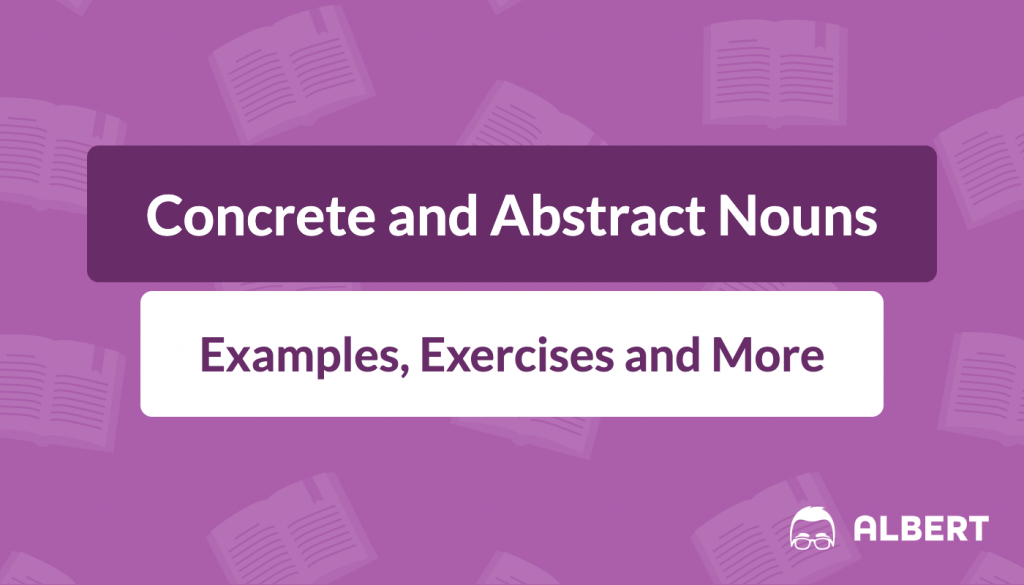
What makes some nouns fall under the category of concrete, while other nouns are categorized as abstract?
Read on to learn how to tell the difference between concrete and abstract nouns and when to use each type.
When you’re ready, test yourself with a quiz and practice with our high-quality, standards-aligned questions here .
What We Review
The Basics of Concrete and Abstract Nouns
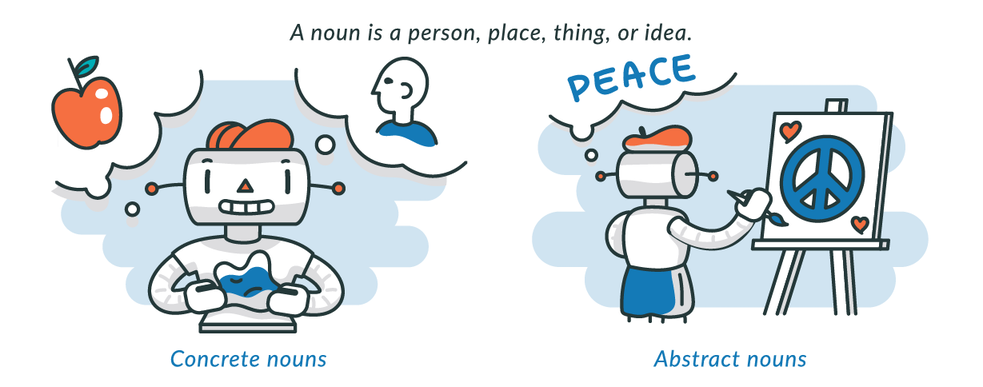
What is a concrete noun?
A concrete noun identifies something material and non-abstract, such as a chair, a house, or an automobile. Think about everything you can experience with your five senses: smell, touch, sight, hearing, or taste. A strawberry milkshake that tastes sweet and feels cold is an example of a concrete noun .
What is an abstract noun?
An abstract noun identifies something immaterial and abstract, such as rest, dread, or transportation. Think about something you can describe but do not experience with your five senses.
Scoring an ‘A’ on a test or sinking the winning basket in a basketball game is what we would all describe as a win, a victory, or a success. But can you really describe any of these nouns using your senses?
Sure, you might be able to feel the rubber basketball as it leaves your hand and hear it “whoosh” through the net. You may be able to see your score on your test and feel the weight of the paper in your hands, but none of these senses can fully capture the meaning of these abstract nouns .

What is the relationship between concrete and abstract nouns?
Concrete and abstract nouns work together to allow us to communicate effectively.
This list, obviously, does not include all common and proper nouns and is meant to be used as a guide while identifying other nouns.
For example, you may have a friend who shares with you that they feel anxious.
You may not be familiar with this feeling, and you are having trouble understanding what your friend is going through because they used an abstract noun . You can ask your friend to describe what anxiety feels like, and often your friend will then use concrete nouns to help you understand more clearly.

Your friend explains that his anxiety feels like a giant rock is pushing on his chest, keeping him from moving. His anxiety also feels like he is trying to cross a busy highway, but there are too many cars quickly passing by, making it impossible for him to cross.
Because your friend used concrete nouns such as rock, chest, highway, and cars, you now have a better understanding of what the abstract noun, anxiety, must feel like. Now you know how to help your friend because using these different nouns together helped you both communicate effectively.
How do you use concrete and abstract nouns?
Concrete and abstract nouns can be used together or separately. Authors use concrete nouns to paint vivid physical descriptions of characters and settings.
For example, in The Hobbit , the author, J. R. R. Tolkien, describes the wizard Gandalf as “ an old man with a staff {with} a tall pointed blue hat, a long grey cloak, a silver scarf over a white beard hung down below his waist, and immense black boots ” (Tolkien 17).

There are several concrete nouns in this sentence that give the reader a picture of what Gandalf might look like. However, to fully understand who Gandalf is apart from just his physical appearance, the author must use abstract nouns as well.
As the story goes on, the reader finds out that some of Gandalf’s strengths are his wisdom and resourcefulness. Both wisdom and resourcefulness are abstract nouns that describe Gandalf further by going beyond Gandalf’s outward appearance.
However, to fully understand these abstract nouns, concrete nouns are needed once again to show the concrete details of how these strengths reveal themselves within the story.
For example, Gandalf’s resourcefulness is shown when he tricks two dangerous trolls into fighting with one another until the sun comes up, which then turns the trolls into stone.
As the trolls argue, Gandalf exclaims, “Dawn take you all, and be stone to you!” (Tolkien 51). When the trolls experience these concrete nouns and see the rising sun turn their bodies into stone, they realize Gandalf’s resourcefulness a little too late.
Return to the Table fo Contents
3 Tips for Understanding Concrete vs. Abstract Nouns
Here are some important tips to help you determine the difference between concrete and abstract nouns:

Tip #1. If you can experience the noun with one of your five senses, it is a concrete noun
- Remember, concrete nouns identify something material and non-abstract, which means we can see, taste, hear, touch, or smell it.
- For example, your brother’s stinky shoes are a concrete noun. You can see them, and you can absolutely smell them.
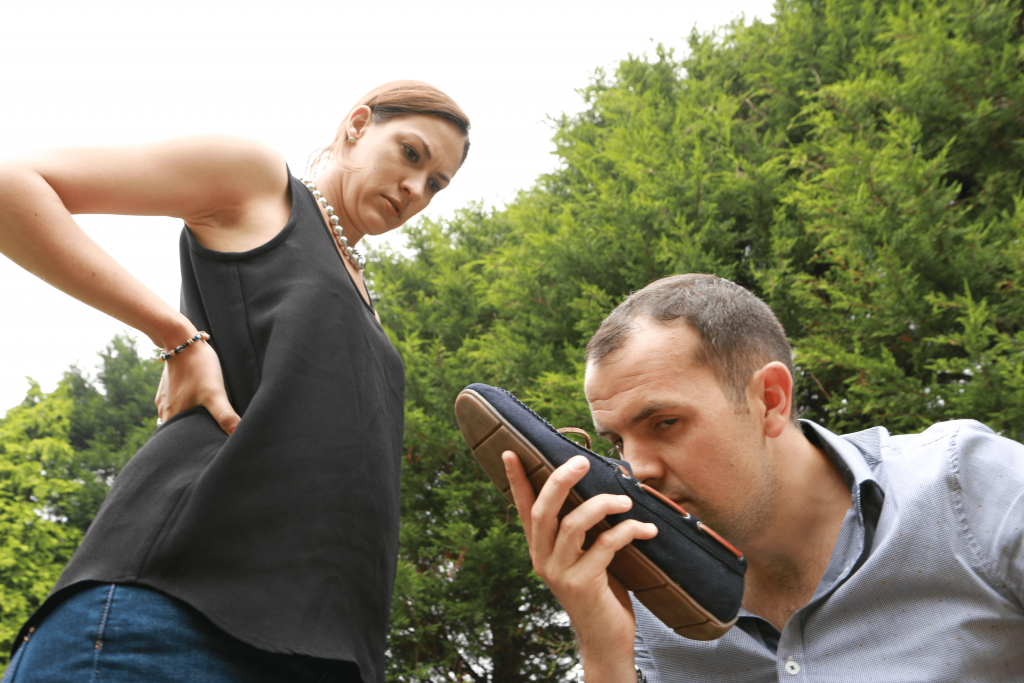
Tip #2. If you cannot experience the noun with one or more of your five senses, it is an abstract noun
- Remember, abstract nouns identify something immaterial and abstract, which means we cannot see, taste, hear, touch, or smell it.
- For example, the word love is an abstract noun. No one ever saw love taking a stroll around the neighborhood with their pet Corgi, but most everyone understands what love is, even if we have various definitions of it.


Tip #3. Concrete nouns can help us better understand the meaning of abstract nouns
- Because we cannot experience abstract nouns with our five senses, it can be difficult to fully understand the meaning of certain abstract nouns.
- Concrete nouns help us understand the meaning of abstract nouns by comparing something immaterial to something material.
- For example, the abstract noun bravery can be better understood by comparing this word to the concrete words and actions of Martin Luther King Jr. Martin Luther King Jr. embodies the abstract noun bravery because people saw his march to protect the rights of all people, people heard his voice speak against the injustice happening to people around him, and people knew his ears were always open to the stories of people who looked up to him.
- While the abstract noun bravery cannot be experienced using our five senses, we can understand its meaning better by using concrete nouns such as march , voice , and ears .
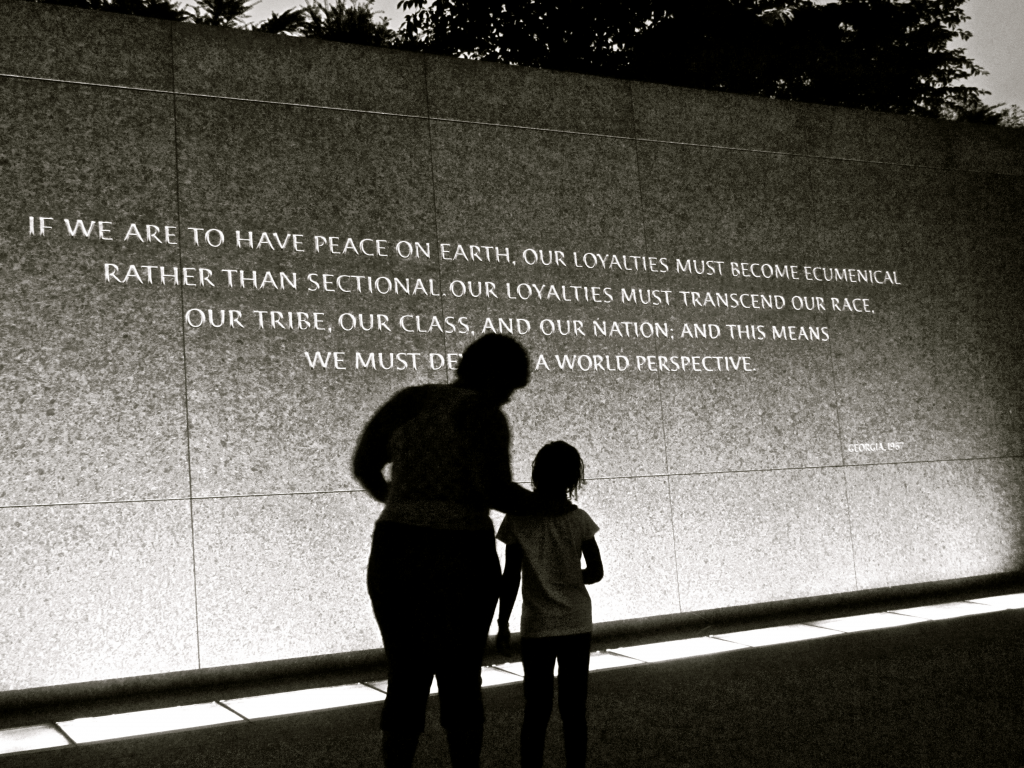
Applying the Basics: Common and Proper Noun Review & Practice
Now that you understand the difference between concrete and abstract nouns, let’s practice identifying both types of nouns.
The Ultimate List of Concrete and Abstract Nouns
Refer to the graphic below for an extensive list of example concrete and abstract nouns:

This list, obviously, does not include all concrete and abstract nouns, and it is meant to be used as a guide while identifying the difference between these two types of nouns.
Concrete Noun Exercises and Review
Now that you know the difference between concrete and abstract nouns, test your ability to accurately identify concrete nouns.
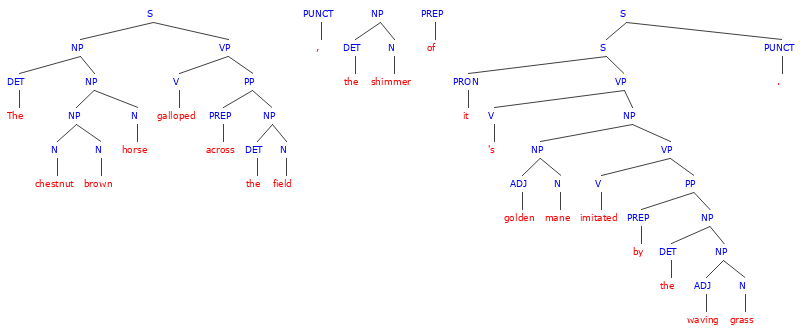
Select the concrete noun(s) in the sentences below. Remember, these nouns identify something material that can be experienced using one or more of the five senses.
1. The chestnut brown horse galloped across the field , the shimmer of it’s golden mane imitated by the waving grass .
- In this sentence, horse, field, shimmer, mane , and grass are all concrete nouns because they can be experienced by one or more of the five senses, specifically, sight.
2. The heat of the sun beat down mercilessly on the soccer players , forcing several players to take a break to drink long gulps of cold water .
- In this sentence , heat, sun, players, gulps, and water are concrete nouns because they can all be seen, tasted, or felt. The noun break is not underlined because it refers to a stop in time and cannot be experienced by one or more of the five senses. Therefore, it is an abstract noun.
3. As she leaned her head outside the window , she could smell the fresh-cut grass and newly-mulched flower beds .
- In this sentence , head, window, grass, and flower beds are all concrete nouns because they can all be seen or smelled.
4. He adjusted the sound on his airpods so that he could hear the violin more clearly.
- In this sentence , sound, airpods, and violin are all concrete nouns because they can be perceived with the senses of sight and hearing.
5. The flames crackled and hissed atop the dry brush , spreading frantically across the forest in smoky gusts .
- In this sentence, flames, brush, forest, and gusts are all concrete nouns. The flames can be seen and heard spreading across the dry branches, and the smoky gusts can be seen, smelled, and even felt as it burns our eyes.
Pro tip : When evaluating whether a noun is concrete, ask yourself, “Can I experience it using one or more of the five senses?”
Abstract Noun Exercises and Review
Now that you know the difference between concrete and abstract nouns, test your ability to accurately identify abstract nouns.
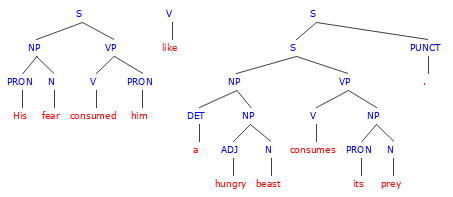
Select the abstract noun(s) in the sentences below. Remember, these nouns identify something immaterial and abstract that cannot be experienced using any of the five senses.
1. His fear consumed him like a hungry beast consumes its prey.
- In this sentence, fear is the only abstract noun because it is the only noun that cannot be experienced using any of the five senses. Other nouns such as beast and prey can immediately be visualized in our minds, making these nouns concrete.
2. Her unwillingness to reach an agreement stalled the proceedings .
- In this sentence , unwillingness, agreement, and proceedings are all abstract nouns that express something immaterial and cannot be experienced using any of the five senses.
3. His worry over the Friday night game consumed him and caused his failure on his biology exam.
- In this sentence , worry and failure are both abstract nouns that identify something immaterial and cannot be experienced using any of the five senses.
4. One of Abraham Lincoln’s goals as president was to end slavery and declare freedom from forced servitude .
- In this sentence , slavery, freedom, and servitude are all abstract nouns because they all represent something immaterial that cannot be experienced using the five senses.
5. In his sonnets, Shakespeare often wrote about love , comparing his subject to the beauty of the natural world.
- In this sentence, love and beauty are both abstract nouns that express something immaterial that cannot be experienced using the five senses.
Pro tip : When evaluating whether a noun is abstract, ask yourself, “Can I experience it using one or more of the five senses? If the answer is no, then the noun is abstract.”
For additional practice, check out Concrete and Abstract Nouns content on Albert.
Try for Yourself: Concrete and Abstract Nouns Quiz
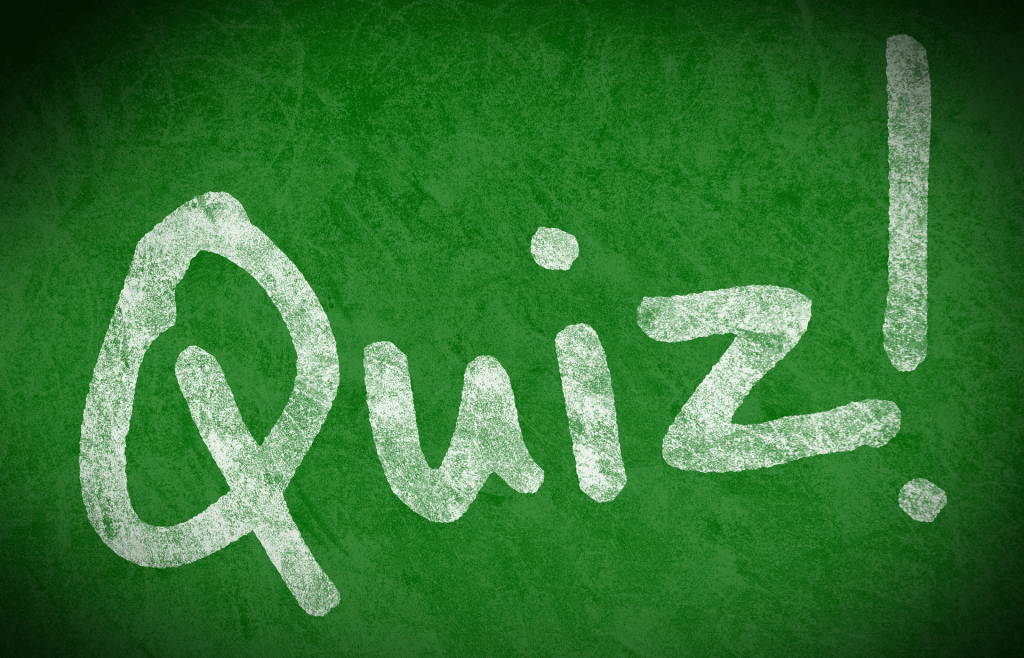
Feeling confident in your understanding of concrete and abstract nouns?
Take this short six-question quiz to see what you’ve learned:
1. Does a concrete noun identify something material or immaterial?
- Answer: Material
- Correct Explanation: That’s right! A concrete noun identifies something material like a car, a ball, or a dog.
- Incorrect Explanation: Sorry, that’s not right! Remember, a concrete noun identifies something material that can be experienced by one or more of the five senses.
2. Does an abstract noun identify something material or immaterial?
- Answer: Immaterial
- Correct Explanation: That’s right! An abstract noun identifies something abstract or immaterial like justice, freedom, or peace.
- Incorrect Explanation: Sorry, that’s not right! Remember, an abstract noun identifies something immaterial that cannot be experienced by any of the five senses.
3. In this sentence, are the underlined words concrete or abstract nouns ?
“We will not be satisfied until justice rolls down like waters and righteousness like a mighty stream ” (King Jr.).
- Answer: Concrete
- Correct Explanation: That’s right! The nouns waters and stream are concrete because they refer to something material that can be both seen and touched.
4. In this sentence, are the underlined words concrete or abstract nouns ?
“We will not be satisfied until justice rolls down like waters and righteousness like a mighty stream” (King Jr.).
- Answer: Abstract
- Correct Explanation: That’s right! The nouns justice and righteousness are both abstract because they refer to something immaterial that cannot be experienced by any of the five senses.
5. In this sentence, are the underlined words concrete or abstract nouns ?
The love I have for her knows no limit .
- Correct Explanation: That’s right! The nouns love and limit are both abstract because they refer to something immaterial that cannot be experienced by any of the five senses.
6. In this sentence, are the underlined words concrete or abstract nouns ?
The excited puppy let out a delighted bark as he played contentedly with his red rubber ball .
- Correct Explanation: That’s right! The nouns puppy, bark , and ball are concrete because they refer to something material that can be both seen and touched.
- Incorrect Explanation: Sorry, that’s not right! Remember, a concrete noun identifies something material that can be experienced by one or more of the five senses.
For additional practice with concrete and abstract nouns, check out our practice on Albert: Concrete and Abstract Nouns .
Teacher’s Corner for Concrete and Abstract Nouns
Concrete and abstract nouns are a foundational, third grade grammar skill according to the Common Core State Standards , the Common Core English Language Progressive Skills Chart shows that even elementary-level skills “require continued attention in higher grades as they are applied to increasingly sophisticated writing and speaking.”
Albert’s concrete and abstract nouns practice can be used for more than just homework! Our assessments can be used as pre-and post-tests to measure student progress. Our pre-made quizzes can be used as bell-ringers, exit tickets, and more!
In addition to our pre-made assessments, you can also use our assignments feature to create your own quizzes and assessments.
Summary on Concrete and Abstract Nouns
Concrete nouns identify something material and non-abstract that can be experienced by one or more of the five senses.
Abstract nouns identify something immaterial and abstract that cannot be experienced by any of the five senses.
Concrete and abstract nouns can be used in tandem with one another or separately. Be sure to check out our grammar course for more concrete and abstract noun practice.
You can also access over 3,400 high-quality questions that address nearly every grammatical concept.
Need help preparing for your Grammar exam?
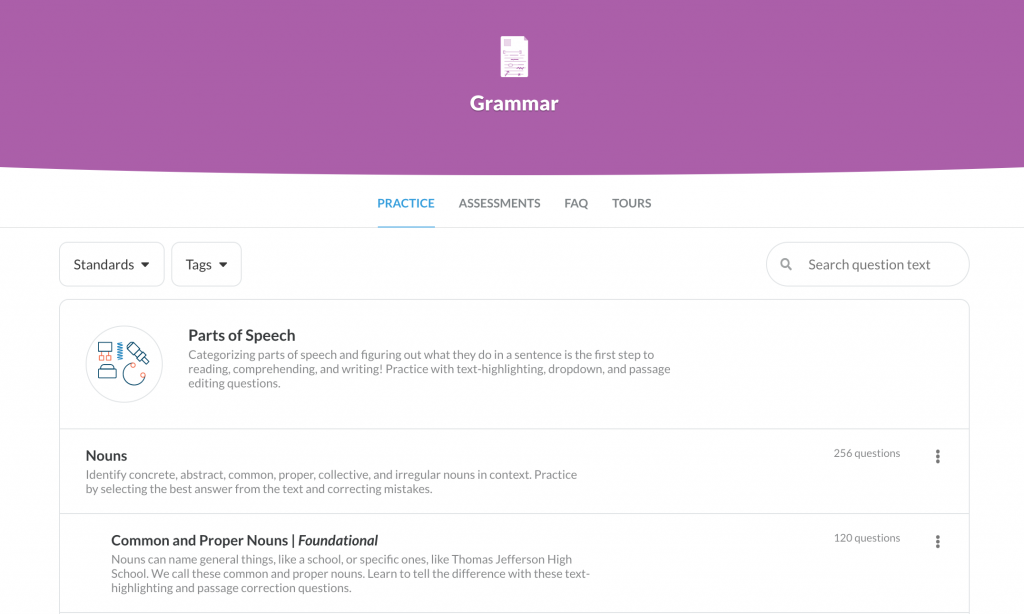
Albert has hundreds of grammar practice questions with detailed explanations to help you master concepts.
Interested in a school license?
Popular posts.

AP® Score Calculators
Simulate how different MCQ and FRQ scores translate into AP® scores

AP® Review Guides
The ultimate review guides for AP® subjects to help you plan and structure your prep.

Core Subject Review Guides
Review the most important topics in Physics and Algebra 1 .

SAT® Score Calculator
See how scores on each section impacts your overall SAT® score

ACT® Score Calculator
See how scores on each section impacts your overall ACT® score

Grammar Review Hub
Comprehensive review of grammar skills

AP® Posters
Download updated posters summarizing the main topics and structure for each AP® exam.
Pasco-Hernando State College
- Concrete and Abstract Words; Denotation and Connotation; Figurative Comparison
- The Writing Process
- Paragraphs and Essays
- Unity and Coherence in Essays
- Proving the Thesis/Critical Thinking
- Standard English, Using a Dictionary, Using a Thesaurus
- Bias and Discriminatory Language; Cliches; Repetitiveness; Wordiness
- Active and Passive Voice; Point of View/Person
Concrete and Abstract Words
A concrete word is a word that refers to a specific, tangible item. Concrete words clearly identify and define. Abstract words are general and not specific.
Our society should primarily be concerned with raising children properly. The word society is not concrete since it is not tangible.
Parents should be primarily concerned with raising children properly. The word parents is concrete since it is tangible.
The need for clear reference is one of the problems with using second person you in writing. The reference is too general and not concrete.
Unclear : You should know what your children are doing.
This sentence is poorly constructed. I, as the reader, would be confused if I have no children. This sentence isn’t meant to refer to me. Here is more clear phrasing.
Corrected : Parents with children living at home should know what their children are doing.
Unclear: The air is bad today.
This sentence is very general. What air? What’s bad about it? Here are sentences that more specifically explain:
Corrected : The pollen level in the air is high today.
The air is thick with smoke from the nearby forest fire.
The traffic from the highway down the block causes a foul smell in the air.
Denotation and Connotation
Denotation is the dictionary meaning of a word. Connotation is what meanings are attached to the word.
House is a place where people live. Home is a place where people live. However, the meanings attached to home are very different.
Some words have positive or negative connotations. For example, would you rather be childlike or childish ? Childlike has a positive connotation while childish has a negative connotation.
Denotation : Small in proportion to height or length
Positive connotation : Slim, Trim, Svelte
Negative connotation : Skinny, Boney, Scrawny
Figurative Comparison
Literal comparisons use concrete and specific analysis based on the dictionary definitions. Figurative comparisons use references to different experiences to evoke images. Here are three sets of examples, each set using a literal and figurative comparison.
Rose petals look like thin, curved shavings of wood which are dyed red. This is a literal comparison.
Rose petals are as soft as a feather and as sweet as a perfume. This is a figurative comparison.
She was shy.
She was like a shrinking violet.
The road was cracked and full of debris.
The road looked as though a bomb has exploded on it.
- Printer-friendly version

Abstract Submission Policies
Share your research with the physics community at aps meetings and events., aps membership and abstract submission eligibility, aps meeting eligibility.
You must be an APS member or member of a reciprocal society to submit an abstract. If you aren't yet a member, you can join APS . If you are a member, please log into your myAPS account to submit your abstract.
If you are an invited speaker or reciprocal society member, you do not need to be APS member to submit an abstract. However, you will need to create an APS web account .
Please review the list of reciprocal societies to learn if you are a member of a reciprocal society.
Unit meeting eligibility
Membership requirements vary when submitting an abstract to unit meetings. Please review upcoming unit meetings on the APS Calendar and the requirements detailed on the appropriate unit event website.
Verifying membership when submitting your abstract
You will need to include your APS membership ID number with your abstract submission. If you are a current member, you can find your membership ID number through your myAPS account .
After joining APS, you will receive your APS membership ID number within 24 hours. If you have joined APS but do not yet have your membership ID number, please enter "membership pending" when submitting our abstract and your membership will be verified after submission.
APS Membership will not issue membership ID numbers during the week of abstract deadlines, so please plan ahead.
Abstract deadlines
Abstracts must be submitted by the deadline to be guaranteed acceptance in the scientific program.
Meeting organizers are not obligated to include contributed abstracts submitted after the deadline.
Upcoming deadlines
Visit the meet meetings and events calendar to find upcoming meetings and submission deadlines.
Abstract submission guidelines
Please refer to the specific abstract submission instructions on the meeting or event website. In general, however, authors should:
- Thoroughly review and edit their abstracts before submitting
- Keep contributed abstract length within the 1,300 character limit
- Add all co-authors before the submission deadline
- Ensure the abstract is relevant to the topical scope of the meeting or event
When submitting your abstract, please include your preference for:
- An oral or poster presentation
- Your preferred presentation time and/or date
- Your preferred order of presentations within a session
At their discretion, event organizers will make an effort to accommodate these scheduling preferences. However, scheduling may be affected by time and space limitations.
Editing abstracts
APS will only correct mistakes and misspellings in the author’s name or affiliation. To edit abstract content, please withdraw the original abstract and resubmit a corrected version before the abstract submission deadline.
You cannot change your abstract content after author notification have been sent to submitters.
Withdrawing abstracts
After submitting your abstract, you will receive a confirmation email with the withdrawal deadline. Abstracts can be withdrawn online before this date and will not appear in the event program. Only the abstract submitter can request to withdraw an abstract.
After the withdrawal deadline, you must contact us to withdraw an abstract submission . The abstract will still appear as "abstract withdrawn" in the printed program, if one is available for the event.
Altered or rejected abstracts
APS may alter or reject abstracts based on the appropriateness of the content for the meeting or for other reasons such as:
- Excessive length
- Failure to comply with style guidelines
- Repeated cancellations from the submitter
Contributed abstract guidelines
Contributed abstract submission eligibility.
APS members and reciprocal society members may give one technical contributed presentation, either an oral or poster presentation, at March or April Meeting.
APS members may also submit a contributed abstract that lists a non-member as a presenter. The presenter must attend the meeting and give the presentation.
Technical and non-technical contributed submissions
For each presenting author, only one contributed oral abstract on a technical topic will be accepted into the scientific program. At our discretion, APS may accepted additional technical abstracts as poster presentations, if space is available.
An author may submit an additional oral abstract on a non-technical topic, such as education or policy, to present at a session sponsored by an APS Forum or Committee.
At the APS March and April meetings, oral presentations of contributed abstracts are given 10 minutes for presentation and two minutes for questions. Unit meeting presentation times vary.
Submitting and editing contributed abstracts
Please proofread your abstract carefully and thoroughly before submitting. APS will only correct system-generated LaTeX mistakes and misspellings in authors' names or affiliations. APS will not make additional edits, add new authors or reorder the author list.
When submitting your contributed abstract, please do not exceed 1,300 characters and please comply with the submission system style defaults—do not introduce your own formatting in the abstract.
March Meeting abstract edits
Submitters to APS March Meeting may edit abstracts in the online submission system up until the submission deadline.
Contributed abstract acceptance
If your contributed abstract is accepted, APS will notify you via email. You are responsible for confirming your session date and time and requesting changes by contacting APS Abstract Help .
Invited abstract guidelines
Invited speaker eligibility.
APS members may be invited to present a scientific abstract at March or April meeting.
Individual speakers may not be invited to speak at two consecutive meetings. That is, an invited speaker who presented at March Meeting 2023 may not present as an invited speaker at March Meeting 2024. Exceptions are made for speakers who will receive APS Prizes and Awards at the meeting.
Please review the speaker nominations instructions for more information.
In addition to their invited presentation, invited speakers may submit one contributed abstract for the scientific program. APS will communicated with invited speakers about submitting their abstracts and registering for the meeting.
Invited speakers must register to attend the meeting where they are presenting. Some invited speakers' registration fees may be sponsored by an APS unit.
Invited abstract submission instructions
Authors and collaborators.
Abstracts submitted for an invited speaker may only have that individual as the author. APS suggests that the invited speaker credit collaborating researchers in a footnote in the paper.
During the submission process, an invited speaker can add collaborators as co-authors. However, the invited speaker must give the presentation, unless a replacement speaker is agreed upon beforehand, as discussed with APS Abstract Help .
An invited paper is expected to have 30 minutes for presentation time, plus six minutes for a question and answer session.
Technical and non-technical invited submissions
If you are submitting an invited abstract, you may also submit one additional abstract of a non-technical nature, such as on education, history of physics or public policy. This abstract may be presented at a session, sponsored by an APS forum or committee , of broad concern to the physics community.
Invited abstract character limits
When submitting an invited abstract, please do not exceed the 2,000 character limit for your invited abstract text.
Withdrawing an invited abstract
If you accept an invitation to present but are later unable to do so, please contact APS Abstract Help .
Advice for abstract writing
As an initial summary of your research, your abstract and its title are your first chance to impress your audience and entice them to attend your presentation or read your paper.
When writing your abstract and title, think about your research's relevance and context. How does your research fit into the broad scope of the meeting where you will present?
Effective titles
When crafting an effective title, be sure that it:
- Predicts the abstract contents
- Contains important keywords
- Defines the research's purpose, scope, tone and methods
Parts of an abstract
Good abstracts include many of the parts of a paper, condensed or simplified to the most essential information:
- Introduction
- Previous or relevant references
- The goal of the project
- A description of how that goal was met
- Key results
- Details about why your results are unique or noteworthy
Additional advice
While writing your abstract, also keep the following in mind:
- Stay within the required character or word count
- Use proper submission format—often LaTeX, MS Word or plain text
- Ensure your abstract is understandable without reading the paper or seeing the presentation
- Define acronyms and minimize jargon
Abstract helpline
If you have questions or require assistance in submitting your abstract, please contact the APS Abstract Help team.
Phone: +1 (301) 209-3290 (Monday – Friday, 9 a.m. - 5 p.m. Eastern) Email : The APS Abstract help team
Join your Society
If you embrace scientific discovery, truth and integrity, partnership, inclusion, and lifelong curiosity, this is your professional home.
- Yekaterinburg
- Novosibirsk
- Vladivostok

- Tours to Russia
- Practicalities
- Russia in Lists
Rusmania • Deep into Russia
Out of the Centre
Savvino-storozhevsky monastery and museum.

Zvenigorod's most famous sight is the Savvino-Storozhevsky Monastery, which was founded in 1398 by the monk Savva from the Troitse-Sergieva Lavra, at the invitation and with the support of Prince Yury Dmitrievich of Zvenigorod. Savva was later canonised as St Sabbas (Savva) of Storozhev. The monastery late flourished under the reign of Tsar Alexis, who chose the monastery as his family church and often went on pilgrimage there and made lots of donations to it. Most of the monastery’s buildings date from this time. The monastery is heavily fortified with thick walls and six towers, the most impressive of which is the Krasny Tower which also serves as the eastern entrance. The monastery was closed in 1918 and only reopened in 1995. In 1998 Patriarch Alexius II took part in a service to return the relics of St Sabbas to the monastery. Today the monastery has the status of a stauropegic monastery, which is second in status to a lavra. In addition to being a working monastery, it also holds the Zvenigorod Historical, Architectural and Art Museum.
Belfry and Neighbouring Churches

Located near the main entrance is the monastery's belfry which is perhaps the calling card of the monastery due to its uniqueness. It was built in the 1650s and the St Sergius of Radonezh’s Church was opened on the middle tier in the mid-17th century, although it was originally dedicated to the Trinity. The belfry's 35-tonne Great Bladgovestny Bell fell in 1941 and was only restored and returned in 2003. Attached to the belfry is a large refectory and the Transfiguration Church, both of which were built on the orders of Tsar Alexis in the 1650s.

To the left of the belfry is another, smaller, refectory which is attached to the Trinity Gate-Church, which was also constructed in the 1650s on the orders of Tsar Alexis who made it his own family church. The church is elaborately decorated with colourful trims and underneath the archway is a beautiful 19th century fresco.
Nativity of Virgin Mary Cathedral

The Nativity of Virgin Mary Cathedral is the oldest building in the monastery and among the oldest buildings in the Moscow Region. It was built between 1404 and 1405 during the lifetime of St Sabbas and using the funds of Prince Yury of Zvenigorod. The white-stone cathedral is a standard four-pillar design with a single golden dome. After the death of St Sabbas he was interred in the cathedral and a new altar dedicated to him was added.

Under the reign of Tsar Alexis the cathedral was decorated with frescoes by Stepan Ryazanets, some of which remain today. Tsar Alexis also presented the cathedral with a five-tier iconostasis, the top row of icons have been preserved.
Tsaritsa's Chambers

The Nativity of Virgin Mary Cathedral is located between the Tsaritsa's Chambers of the left and the Palace of Tsar Alexis on the right. The Tsaritsa's Chambers were built in the mid-17th century for the wife of Tsar Alexey - Tsaritsa Maria Ilinichna Miloskavskaya. The design of the building is influenced by the ancient Russian architectural style. Is prettier than the Tsar's chambers opposite, being red in colour with elaborately decorated window frames and entrance.

At present the Tsaritsa's Chambers houses the Zvenigorod Historical, Architectural and Art Museum. Among its displays is an accurate recreation of the interior of a noble lady's chambers including furniture, decorations and a decorated tiled oven, and an exhibition on the history of Zvenigorod and the monastery.
Palace of Tsar Alexis

The Palace of Tsar Alexis was built in the 1650s and is now one of the best surviving examples of non-religious architecture of that era. It was built especially for Tsar Alexis who often visited the monastery on religious pilgrimages. Its most striking feature is its pretty row of nine chimney spouts which resemble towers.

Plan your next trip to Russia
Ready-to-book tours.
Your holiday in Russia starts here. Choose and book your tour to Russia.
REQUEST A CUSTOMISED TRIP
Looking for something unique? Create the trip of your dreams with the help of our experts.

40 Facts About Elektrostal
Written by Lanette Mayes
Modified & Updated: 19 May 2024
Reviewed by Jessica Corbett

Elektrostal is a vibrant city located in the Moscow Oblast region of Russia. With a rich history, stunning architecture, and a thriving community, Elektrostal is a city that has much to offer. Whether you are a history buff, nature enthusiast, or simply curious about different cultures, Elektrostal is sure to captivate you.
This article will provide you with 40 fascinating facts about Elektrostal, giving you a better understanding of why this city is worth exploring. From its origins as an industrial hub to its modern-day charm, we will delve into the various aspects that make Elektrostal a unique and must-visit destination.
So, join us as we uncover the hidden treasures of Elektrostal and discover what makes this city a true gem in the heart of Russia.
Key Takeaways:
- Elektrostal, known as the “Motor City of Russia,” is a vibrant and growing city with a rich industrial history, offering diverse cultural experiences and a strong commitment to environmental sustainability.
- With its convenient location near Moscow, Elektrostal provides a picturesque landscape, vibrant nightlife, and a range of recreational activities, making it an ideal destination for residents and visitors alike.
Known as the “Motor City of Russia.”
Elektrostal, a city located in the Moscow Oblast region of Russia, earned the nickname “Motor City” due to its significant involvement in the automotive industry.
Home to the Elektrostal Metallurgical Plant.
Elektrostal is renowned for its metallurgical plant, which has been producing high-quality steel and alloys since its establishment in 1916.
Boasts a rich industrial heritage.
Elektrostal has a long history of industrial development, contributing to the growth and progress of the region.
Founded in 1916.
The city of Elektrostal was founded in 1916 as a result of the construction of the Elektrostal Metallurgical Plant.
Located approximately 50 kilometers east of Moscow.
Elektrostal is situated in close proximity to the Russian capital, making it easily accessible for both residents and visitors.
Known for its vibrant cultural scene.
Elektrostal is home to several cultural institutions, including museums, theaters, and art galleries that showcase the city’s rich artistic heritage.
A popular destination for nature lovers.
Surrounded by picturesque landscapes and forests, Elektrostal offers ample opportunities for outdoor activities such as hiking, camping, and birdwatching.
Hosts the annual Elektrostal City Day celebrations.
Every year, Elektrostal organizes festive events and activities to celebrate its founding, bringing together residents and visitors in a spirit of unity and joy.
Has a population of approximately 160,000 people.
Elektrostal is home to a diverse and vibrant community of around 160,000 residents, contributing to its dynamic atmosphere.
Boasts excellent education facilities.
The city is known for its well-established educational institutions, providing quality education to students of all ages.
A center for scientific research and innovation.
Elektrostal serves as an important hub for scientific research, particularly in the fields of metallurgy, materials science, and engineering.
Surrounded by picturesque lakes.
The city is blessed with numerous beautiful lakes , offering scenic views and recreational opportunities for locals and visitors alike.
Well-connected transportation system.
Elektrostal benefits from an efficient transportation network, including highways, railways, and public transportation options, ensuring convenient travel within and beyond the city.
Famous for its traditional Russian cuisine.
Food enthusiasts can indulge in authentic Russian dishes at numerous restaurants and cafes scattered throughout Elektrostal.
Home to notable architectural landmarks.
Elektrostal boasts impressive architecture, including the Church of the Transfiguration of the Lord and the Elektrostal Palace of Culture.
Offers a wide range of recreational facilities.
Residents and visitors can enjoy various recreational activities, such as sports complexes, swimming pools, and fitness centers, enhancing the overall quality of life.
Provides a high standard of healthcare.
Elektrostal is equipped with modern medical facilities, ensuring residents have access to quality healthcare services.
Home to the Elektrostal History Museum.
The Elektrostal History Museum showcases the city’s fascinating past through exhibitions and displays.
A hub for sports enthusiasts.
Elektrostal is passionate about sports, with numerous stadiums, arenas, and sports clubs offering opportunities for athletes and spectators.
Celebrates diverse cultural festivals.
Throughout the year, Elektrostal hosts a variety of cultural festivals, celebrating different ethnicities, traditions, and art forms.
Electric power played a significant role in its early development.
Elektrostal owes its name and initial growth to the establishment of electric power stations and the utilization of electricity in the industrial sector.
Boasts a thriving economy.
The city’s strong industrial base, coupled with its strategic location near Moscow, has contributed to Elektrostal’s prosperous economic status.
Houses the Elektrostal Drama Theater.
The Elektrostal Drama Theater is a cultural centerpiece, attracting theater enthusiasts from far and wide.
Popular destination for winter sports.
Elektrostal’s proximity to ski resorts and winter sport facilities makes it a favorite destination for skiing, snowboarding, and other winter activities.
Promotes environmental sustainability.
Elektrostal prioritizes environmental protection and sustainability, implementing initiatives to reduce pollution and preserve natural resources.
Home to renowned educational institutions.
Elektrostal is known for its prestigious schools and universities, offering a wide range of academic programs to students.
Committed to cultural preservation.
The city values its cultural heritage and takes active steps to preserve and promote traditional customs, crafts, and arts.
Hosts an annual International Film Festival.
The Elektrostal International Film Festival attracts filmmakers and cinema enthusiasts from around the world, showcasing a diverse range of films.
Encourages entrepreneurship and innovation.
Elektrostal supports aspiring entrepreneurs and fosters a culture of innovation, providing opportunities for startups and business development.
Offers a range of housing options.
Elektrostal provides diverse housing options, including apartments, houses, and residential complexes, catering to different lifestyles and budgets.
Home to notable sports teams.
Elektrostal is proud of its sports legacy, with several successful sports teams competing at regional and national levels.
Boasts a vibrant nightlife scene.
Residents and visitors can enjoy a lively nightlife in Elektrostal, with numerous bars, clubs, and entertainment venues.
Promotes cultural exchange and international relations.
Elektrostal actively engages in international partnerships, cultural exchanges, and diplomatic collaborations to foster global connections.
Surrounded by beautiful nature reserves.
Nearby nature reserves, such as the Barybino Forest and Luchinskoye Lake, offer opportunities for nature enthusiasts to explore and appreciate the region’s biodiversity.
Commemorates historical events.
The city pays tribute to significant historical events through memorials, monuments, and exhibitions, ensuring the preservation of collective memory.
Promotes sports and youth development.
Elektrostal invests in sports infrastructure and programs to encourage youth participation, health, and physical fitness.
Hosts annual cultural and artistic festivals.
Throughout the year, Elektrostal celebrates its cultural diversity through festivals dedicated to music, dance, art, and theater.
Provides a picturesque landscape for photography enthusiasts.
The city’s scenic beauty, architectural landmarks, and natural surroundings make it a paradise for photographers.
Connects to Moscow via a direct train line.
The convenient train connection between Elektrostal and Moscow makes commuting between the two cities effortless.
A city with a bright future.
Elektrostal continues to grow and develop, aiming to become a model city in terms of infrastructure, sustainability, and quality of life for its residents.
In conclusion, Elektrostal is a fascinating city with a rich history and a vibrant present. From its origins as a center of steel production to its modern-day status as a hub for education and industry, Elektrostal has plenty to offer both residents and visitors. With its beautiful parks, cultural attractions, and proximity to Moscow, there is no shortage of things to see and do in this dynamic city. Whether you’re interested in exploring its historical landmarks, enjoying outdoor activities, or immersing yourself in the local culture, Elektrostal has something for everyone. So, next time you find yourself in the Moscow region, don’t miss the opportunity to discover the hidden gems of Elektrostal.
Q: What is the population of Elektrostal?
A: As of the latest data, the population of Elektrostal is approximately XXXX.
Q: How far is Elektrostal from Moscow?
A: Elektrostal is located approximately XX kilometers away from Moscow.
Q: Are there any famous landmarks in Elektrostal?
A: Yes, Elektrostal is home to several notable landmarks, including XXXX and XXXX.
Q: What industries are prominent in Elektrostal?
A: Elektrostal is known for its steel production industry and is also a center for engineering and manufacturing.
Q: Are there any universities or educational institutions in Elektrostal?
A: Yes, Elektrostal is home to XXXX University and several other educational institutions.
Q: What are some popular outdoor activities in Elektrostal?
A: Elektrostal offers several outdoor activities, such as hiking, cycling, and picnicking in its beautiful parks.
Q: Is Elektrostal well-connected in terms of transportation?
A: Yes, Elektrostal has good transportation links, including trains and buses, making it easily accessible from nearby cities.
Q: Are there any annual events or festivals in Elektrostal?
A: Yes, Elektrostal hosts various events and festivals throughout the year, including XXXX and XXXX.
Elektrostal's fascinating history, vibrant culture, and promising future make it a city worth exploring. For more captivating facts about cities around the world, discover the unique characteristics that define each city . Uncover the hidden gems of Moscow Oblast through our in-depth look at Kolomna. Lastly, dive into the rich industrial heritage of Teesside, a thriving industrial center with its own story to tell.
Was this page helpful?
Our commitment to delivering trustworthy and engaging content is at the heart of what we do. Each fact on our site is contributed by real users like you, bringing a wealth of diverse insights and information. To ensure the highest standards of accuracy and reliability, our dedicated editors meticulously review each submission. This process guarantees that the facts we share are not only fascinating but also credible. Trust in our commitment to quality and authenticity as you explore and learn with us.
Share this Fact:
635th Anti-Aircraft Missile Regiment
635-й зенитно-ракетный полк
Military Unit: 86646
Activated 1953 in Stepanshchino, Moscow Oblast - initially as the 1945th Anti-Aircraft Artillery Regiment for Special Use and from 1955 as the 635th Anti-Aircraft Missile Regiment for Special Use.
1953 to 1984 equipped with 60 S-25 (SA-1) launchers:
- Launch area: 55 15 43N, 38 32 13E (US designation: Moscow SAM site E14-1)
- Support area: 55 16 50N, 38 32 28E
- Guidance area: 55 16 31N, 38 30 38E
1984 converted to the S-300PT (SA-10) with three independent battalions:
- 1st independent Anti-Aircraft Missile Battalion (Bessonovo, Moscow Oblast) - 55 09 34N, 38 22 26E
- 2nd independent Anti-Aircraft Missile Battalion and HQ (Stepanshchino, Moscow Oblast) - 55 15 31N, 38 32 23E
- 3rd independent Anti-Aircraft Missile Battalion (Shcherbovo, Moscow Oblast) - 55 22 32N, 38 43 33E
Disbanded 1.5.98.
Subordination:
- 1st Special Air Defence Corps , 1953 - 1.6.88
- 86th Air Defence Division , 1.6.88 - 1.10.94
- 86th Air Defence Brigade , 1.10.94 - 1.10.95
- 86th Air Defence Division , 1.10.95 - 1.5.98

IMAGES
VIDEO
COMMENTS
Abstract language: Includes general language and intangible qualities, ideas, or concepts. It is often vague and open to interpretation. A reader may find it hard to pin down the exact meaning. Concrete language: Includes specific word usage. It is especially helpful in business communication.
Most of the writing in college moves from the abstract to the concrete. Abstract ideas are so general that a reader will not have a clear idea of what the writer is talking about. Some words are more abstract than others, but overall, abstract words leave the reader hanging and wondering what specifically the writer means.
The ladder of abstraction. At school, you might have learned that words are either abstract or concrete. A pear, a grape, a juicy pineapple—these are all concrete words because we can hold a pear in our hand, taste a grape, and smell a ripe pineapple; they're tangible. In contrast, success, failure, and a mathematical equation are abstract ...
green" are concrete. ABSTRACT: To excel in college, you'll have to work hard. CONCRETE: To excel in college, you'll need to do go to every class; do all your reading before you go; write several drafts of each paper; and review your notes for each class weekly. General vs. Specific Language. General words refer to large classes and broad ...
7. Skip somes lines or start a new page or document. Write "Passage D" at the top. Now translate Passage C into a concrete passage. (Yes, you're doing to your new piece of abstract writing what you did to the original piece of abstract writing.) 8. Read over all four passages. Skip some lines or open a new document and write "Response ...
Without concrete language, writing can seem vague, unclear, or uninteresting. There are many ways to incorporate concrete language into your writing, whether it is a story, a ... adding similes or using verbs that personify has made concrete an abstract or general impression. Activity Rewrite each sentence of the following Yelp review to ...
Activity: Concrete Abstractions 4.2.1 4.2. 1. With a partner or group, discuss each of the following examples of abstract diction. Then, provide three examples of concrete diction (a word or a phrase) that shows what the abstract words describe. See the example below. Freedom. Laziness. Passion.
Concrete language refers to tangible or perceivable characteristics in the real world. Such language is often called "specific." Concrete language can help your reader more precisely understand your writing. Abstract language refers to intangible ideas, rather than real-world objects. This kind of language can be called "general" or ...
Abstract writing is writing that is full of words or phrases that obscure clarity. These abstractions represent the concept or point the writer is trying to make. But instead of getting to the point, they dance around it, leaving the reader frustrated and full of unanswered questions. If you're a writer, this is a problem because if you don ...
You often have the options of using either specific terms (relatively concrete) or general terms (relatively abstract) without greatly affecting length, but certainly affecting impact on readers. You could say, for example, "There are 550 animals on this farm.". Or you could say, "There are 550 cattle on this farm.".
Concrete, Sensory Language. references specific places, events, people, and tangible topics. invokes the readers' senses (taste, smell, touch, sight, and sound) an attribute of prose associated with clarity and simplicity. C oncrete, sensory language is the antithesis of abstract language, which tends to be intangible and metaphysical.
Abstract. Instruction in the writing of abstracts is of growing importance for technical writers, both as a valuable skill in its own right and for the beneficial side effects on other writing competencies. A proposed unit on abstract writing includes activities relevant to the abstract as a distinct writing form and assignments on writing an ...
Abstract Nouns. Abstract nouns are intangible things. They don't take a physical form; rather, they're a concept or an idea. Abstract nouns include emotions, beliefs, and qualities. Although you can, in a way, sense an abstract noun, such as by experiencing anger, it isn't something you can actually engage with using any of the five senses.
Remember, concrete nouns identify something material and non-abstract, which means we can see, taste, hear, touch, or smell it. For example, your brother's stinky shoes are a concrete noun. You can see them, and you can absolutely smell them. Tip #2. If you cannot experience the noun with one or more of your five senses, it is an abstract noun.
For longer works, you can write your abstract through a process of reverse outlining. For each chapter or section, list keywords and draft one to two sentences that summarize the central point or argument. This will give you a framework of your abstract's structure. Next, revise the sentences to make connections and show how the argument ...
A concrete word is a word that refers to a specific, tangible item. Concrete words clearly identify and define. Abstract words are general and not specific. Our society should primarily be concerned with raising children properly. The word society is not concrete since it is not tangible.
How to Use Concrete Details to Enhance Your Writing. Written by MasterClass. Last updated: Nov 23, 2021 • 2 min read. Concrete details can help you craft a compelling story that puts images in your readers' minds and helps them visualize the action. Learn more about how to use concrete details in your writing.
Abstract object theory is a discipline that studies the nature and role of abstract objects. It holds that properties can be related to objects in two ways: through exemplification and through encoding. Concrete objects exemplify their properties while abstract objects merely encode them. This approach is also known as the dual copula strategy.
However, abstract concepts are less stable over time and are more shaped by current life experiences, situations, and culture compared with concrete concepts […]. Moreover, abstract concepts are also by far the most variable: people agree more with one another when asked to define, produce associations, or generate characteristics for ...
Add all co-authors before the submission deadline. Ensure the abstract is relevant to the topical scope of the meeting or event. When submitting your abstract, please include your preference for: An oral or poster presentation. Your preferred presentation time and/or date. Your preferred order of presentations within a session.
Zvenigorod's most famous sight is the Savvino-Storozhevsky Monastery, which was founded in 1398 by the monk Savva from the Troitse-Sergieva Lavra, at the invitation and with the support of Prince Yury Dmitrievich of Zvenigorod. Savva was later canonised as St Sabbas (Savva) of Storozhev. The monastery late flourished under the reign of Tsar ...
40 Facts About Elektrostal. Elektrostal is a vibrant city located in the Moscow Oblast region of Russia. With a rich history, stunning architecture, and a thriving community, Elektrostal is a city that has much to offer. Whether you are a history buff, nature enthusiast, or simply curious about different cultures, Elektrostal is sure to ...
Dmitriy V. Mikheev, Karina A. Telyants, Elena N. Klochkova, Olga V. Ledneva; Affiliations Dmitriy V. Mikheev
635th Anti-Aircraft Missile Regiment. 635-й зенитно-ракетный полк. Military Unit: 86646. Activated 1953 in Stepanshchino, Moscow Oblast - initially as the 1945th Anti-Aircraft Artillery Regiment for Special Use and from 1955 as the 635th Anti-Aircraft Missile Regiment for Special Use. 1953 to 1984 equipped with 60 S-25 (SA-1 ...